Search Result
Results for "
melanoma cancer
" in MedChemExpress (MCE) Product Catalog:
1
Biochemical Assay Reagents
2
Isotope-Labeled Compounds
| Cat. No. |
Product Name |
Target |
Research Areas |
Chemical Structure |
-
- HY-144898
-
|
|
Microtubule/Tubulin
|
Cancer
|
|
SB-216 is a potent tubulin polymerization inhibitor. SB-216 shows strong antiproliferative potency in a panel of human cancer cell lines, including melanoma, lung cancer, and breast cancer. SB-216 can be used for cancer research .
|
-
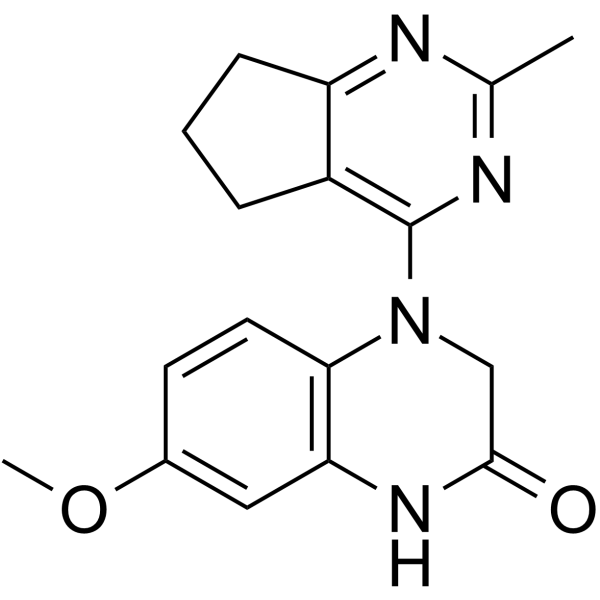
-
- HY-109582
-
ADT-OH
1 Publications Verification
5-(4-Hydroxyphenyl)-3H-1,2-dithiole-3-thione; ACS 1
|
Apoptosis
|
Cancer
|
|
ADT-OH is a hydrogen sulfide-releasing donor. ADT-OH induces apoptosis and inhibits the development of melanoma in vivo by upregulating FADD. ADT-OH has the potential for the research of cancer diseases .
|
-

-
- HY-149950
-
|
|
Apoptosis
|
Cancer
|
|
Anticancer agent 106 (compound 10ic) is an anticancer agent that induces apoptosis in B16-F10 melanoma cells. Anticancer agent 106 also potently inhibits metastatic nodules in a mouse model of lung metastatic melanoma. Anticancer agent 106 can be used in the study of cancer, especially lung metastatic melanoma .
|
-

-
- HY-16514
-
|
|
Others
|
Cancer
|
|
Vindesine is a semisynthetic derivative of vinblastine. Vindesine is a potent anticancer agent. Vindesine can be used for the research of melanoma and lung cancers .
|
-

-
- HY-129144
-
|
|
Others
|
Cancer
|
|
Dihydrodehydrodiconiferyl alcohol (compound 2) is a kind of neolignan. Dihydrodehydrodiconiferyl alcohol can be isolated from Anogeissus acuminata. Dihydrodehydrodiconiferyl alcohol has specific cytotoxic activity on melanoma cancer cell line .
|
-
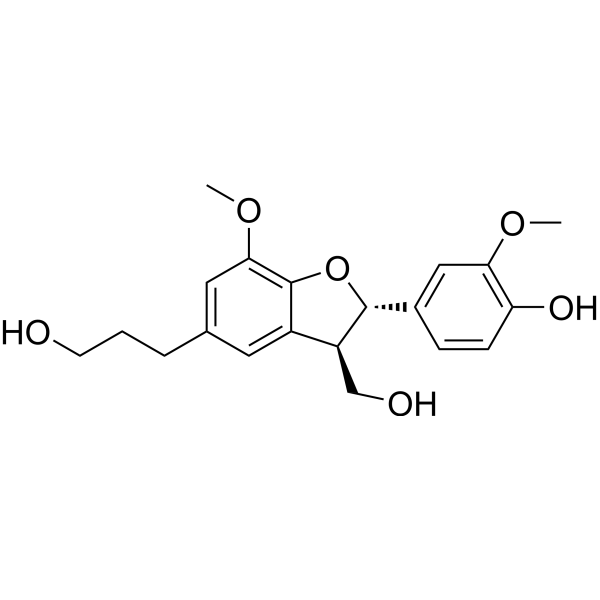
-
- HY-149497
-
|
|
HDAC
|
Cancer
|
|
HDAC6-IN-19 (Compound 14g) is a HDAC6 inhibitor (IC50: 2.68 nM). HDAC6-IN-19 also inhibits HDAC1, HDAC2 and HDAC3 with IC50s of 61.6 nM, 98.7 nM and 103 nM. HDAC6-IN-19 potently inhibits multiple cancer cell proliferation, including leukemia, colon cancer, melanoma, and breast cancer cell lines .
|
-
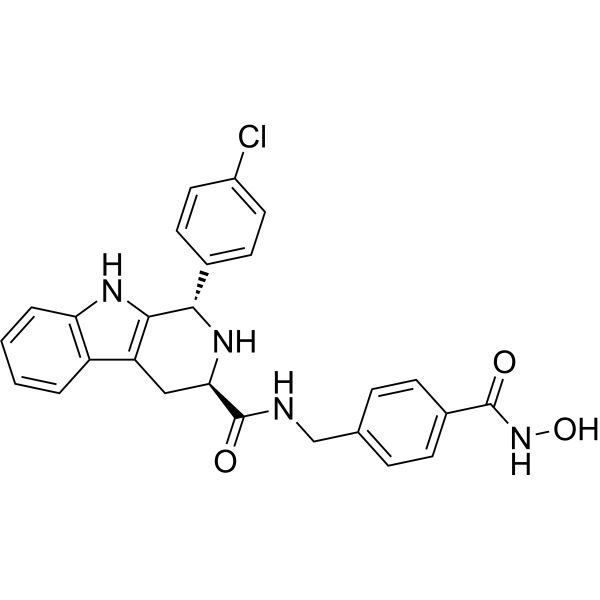
-
- HY-110350
-
|
|
Haspin Kinase
|
Cancer
|
|
CHR-6494 TFA is a potent inhibitor of haspin, with an IC50 of 2 nM. CHR-6494 TFA inhibits histone H3T3 phosphorylation. CHR-6494 TFA induces the apoptosis of cancer cells, including melanoma and breast cancer. CHR-6494 TFA can be used in the research of cancer .
|
-

-
- HY-150158
-
|
|
Toll-like Receptor (TLR)
|
Cancer
|
|
TMX-201 is a TLR7 ligand-phospholipid conjugate. TMX-201 shows potent immune stimulatory activity. TMX-201 can be used for breast cancer and melanoma research .
|
-
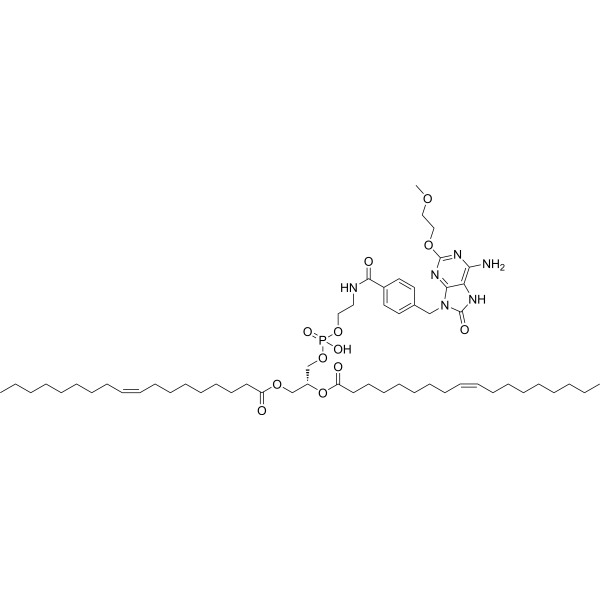
-
- HY-147574
-
|
|
TAM Receptor
|
Cardiovascular Disease
Inflammation/Immunology
Cancer
|
|
Axl-IN-7 (Chemie 22) is a potent AXL inhibitor. Axl-IN-7 can be used for Axl-related diseases research, for example cancers (such as acute myeloid leukemia, melanoma, breast cancer, pancreatic cancer, and glial tumors), renal disease, immune system disorders, and cardiovascular disease .
|
-
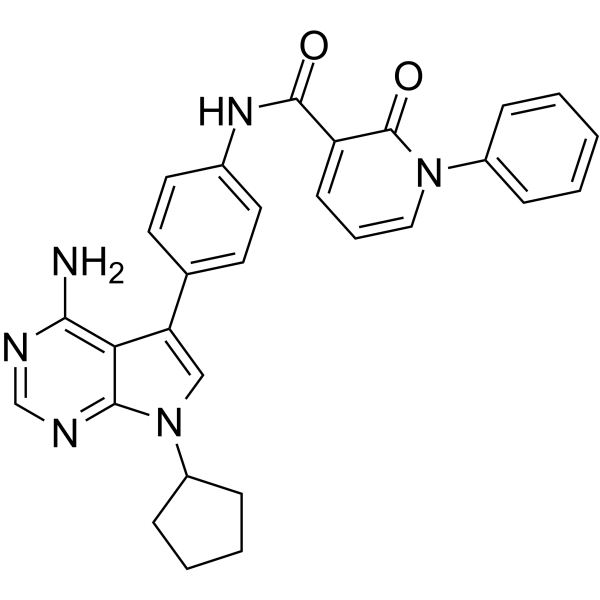
-
- HY-155176
-
|
|
HDAC
|
Cancer
|
|
SP-2-225 is a selective HDAC6 inhibitor. SP-2-225 enhance the production of cancer-associated antigens and macrophage antigen cross-presentation to T cells. SP-2-225 reduces the tumor volume in a syngeneic SM1 melanoma model .
|
-
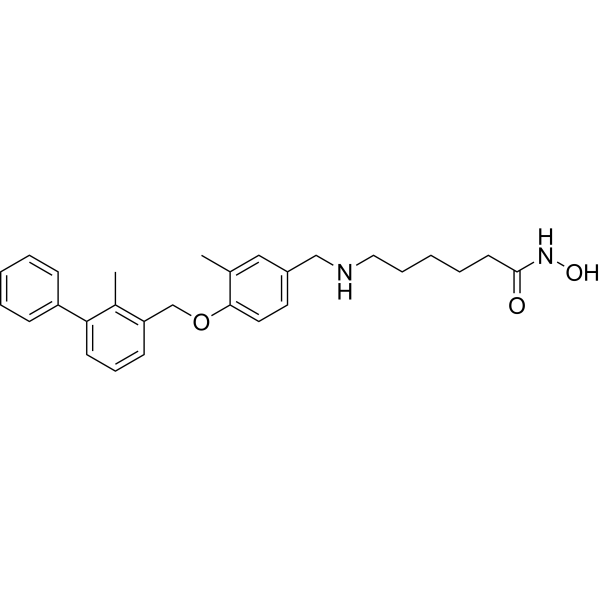
-
- HY-P99205
-
|
|
ADC Antibody
|
Cancer
|
|
Glembatumumab is a fully human IgG2 monoclonal antibody directed against the extracellular structural domain of GPNMB expressed in human breast cancer and melanoma. Glembatumumab can be coupled to the microtubule inhibitor monomethyl auristatin E to form glembatumumab vedotin. Glembatumumab vedotin is an antibody-agent coupling (ADC) with antitumor activity .
|
-

-
- HY-122534
-
|
|
Mitochondrial Metabolism
ADC Cytotoxin
Apoptosis
|
Cancer
|
|
Mensacarcin, a highly complex polyketide, strongly inhibits cell growth universally in cancer cell lines and potently induces apoptosis in melanoma cells. Mensacarcin targets to mitochondria, affects energy metabolism in mitochondria, and activates caspase-dependent apoptotic pathways. Mensacarcin, an antibiotic, can be used as a cytotoxic component of antibody-drug conjugates (ADCs) .
|
-
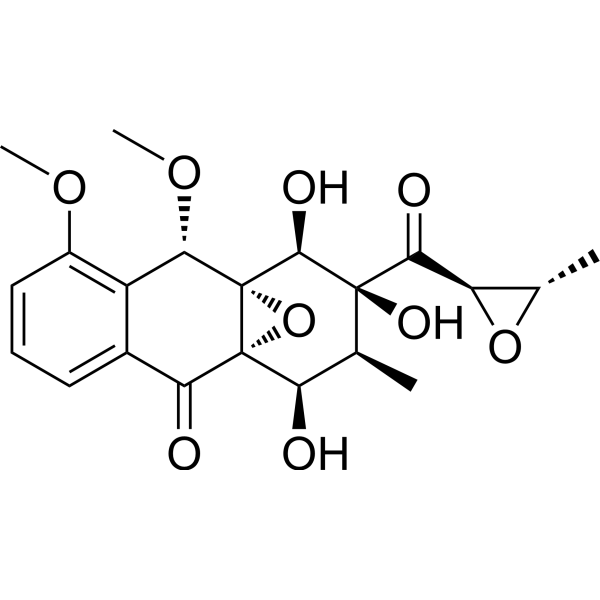
-
- HY-155522
-
|
|
Carbonic Anhydrase
|
Cancer
|
|
WES-1 (Compound 8g) is an inhibitor of carbonic anhydrase IX (Ki: 55.9 μM). WES-1 has broad spectrum anti-proliferative activity against the cancer cells, such as leukemia (K-562 and MOLT-4), non-small cell lung cancer (NCI–H460), colon cancer (HCT 116 and HCT-15) and melanoma (LOX IMVI) cell lines .
|
-
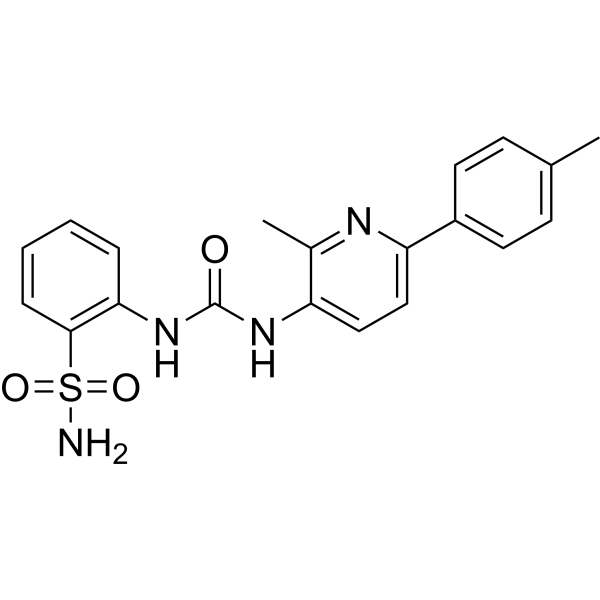
-
- HY-153863
-
|
|
MEK
|
Cancer
|
MS934 is a novel improved VHL-recruiting MEK 1/2 degrader. MS934 has anti-proliferation potency at inhibiting the growth of HT-29 cells with a GI50 value of 0.023 μM. MS934 can be used for the research of variety of human cancers, such as melanoma, nonsmall cell lung cancer (NSCLC), colorectal cancer, primary brain tumors, and hepatocellular carcinoma .
|
-
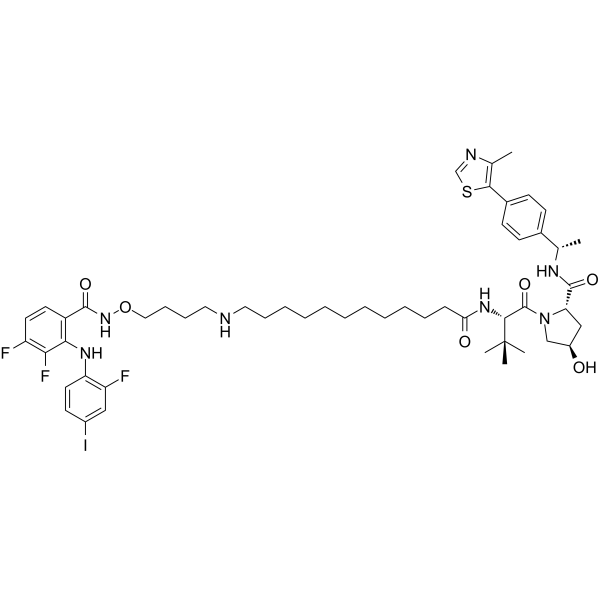
-
- HY-B0078A
-
|
Imidazole Carboxamide citrate
|
Apoptosis
Antibiotic
|
Cancer
|
|
Dacarbazine citrate is a cell cycle nonspecific antineoplastic alkylating agent. Dacarbazine citrate inhibits T and B lymphoblastic response, with IC50 values of 50 and 10 μg/mL, respectively. Dacarbazine Citrate can be used for the research of apoptosis and various cancers such as metastatic malignant melanoma .
|
-
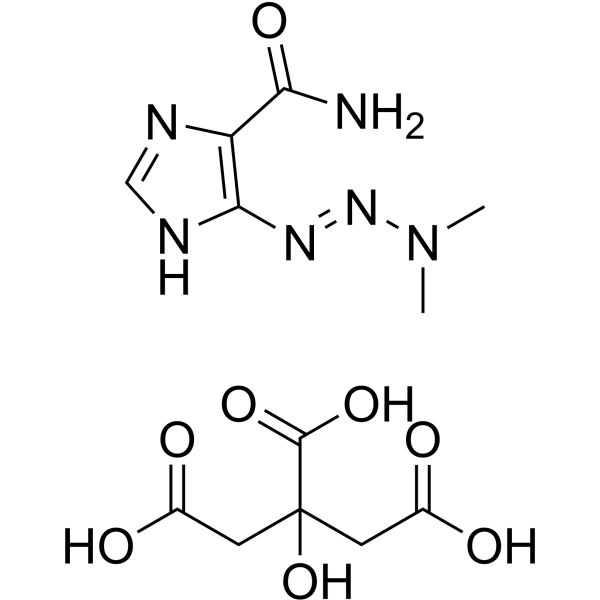
-
- HY-121524
-
|
|
Microtubule/Tubulin
|
Cancer
|
|
DJ101 is a potent and metabolically stable tubulin inhibitor. DJ101 targets the colchicine binding site and overcomes taxane resistance. DJ101 also inhibits melanoma tumor growth and lung metastasis. DJ101 can be used for prostate cancer research .
|
-

-
- HY-124822
-
COH-SR4
1 Publications Verification
|
AMPK
|
Metabolic Disease
Cancer
|
|
COH-SR4 is an AMPK activator. COH-SR4 shows potent anti-proliferative activities against leukemia, melanoma, breast and lung cancers. COH-SR4 inhibits adipocyte differentiation via AMPK activation. COH-SR4 can be used for the research of obesity and related metabolic disorders .
|
-
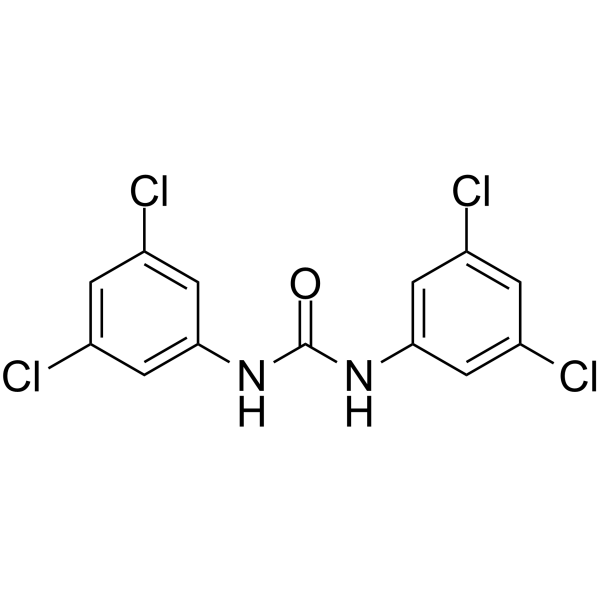
-
- HY-139860
-
|
|
Reactive Oxygen Species
|
Cancer
|
|
Anticancer agent 15 is capable of significantly increasing the cellular level of ROS and inducing melanoma cancer cell death via necroptosis.
|
-
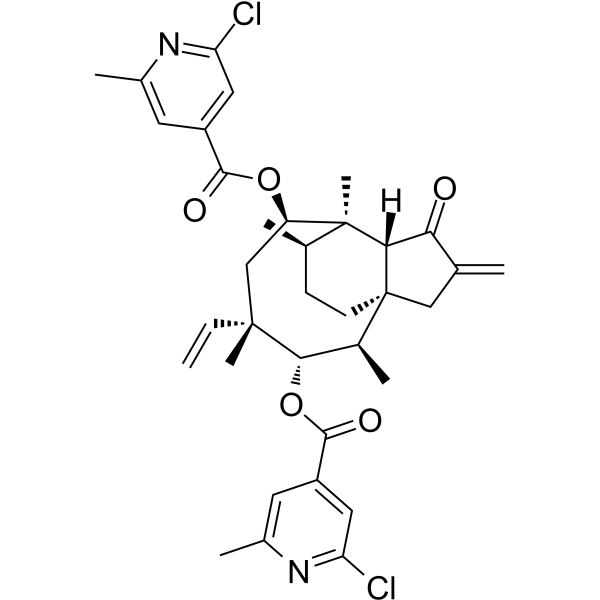
-
- HY-149949
-
|
|
Apoptosis
|
Cancer
|
|
Anticancer agent 105 is a compound based on thienopyrimidine scaffold, with with good safety and anticancer properties. Anticancer agent 105 shows selective toxicity towards melanoma cancer, and induces apoptosis. And Anticancer agent 105 significantly inhibits the metastatic nodules, even in pulmonary metastatic melanoma mouse model .
|
-
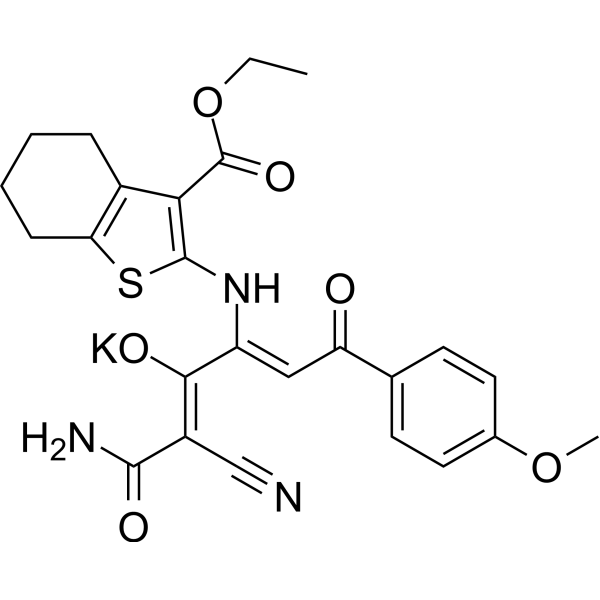
-
- HY-N0610A
-
|
3-Phenylacrylic acid; β-Phenylacrylic acid
|
|
|
|
Cinnamic acid has potential use in cancer intervention, with IC50s of 1-4.5 mM in glioblastoma, melanoma, prostate and lung carcinoma cells.
|
-
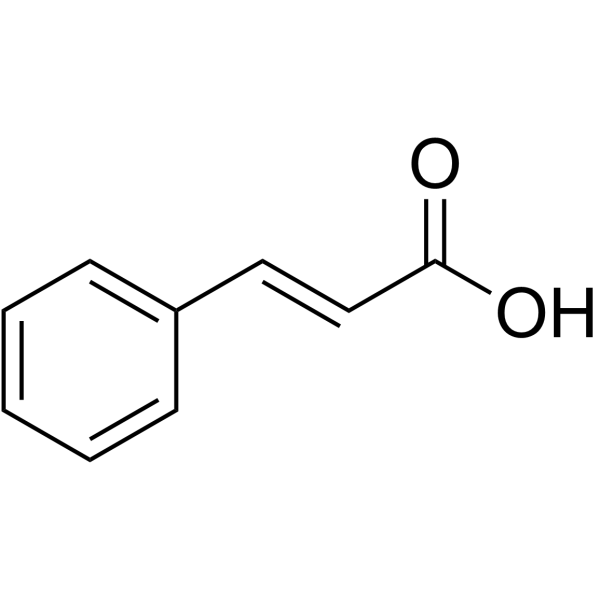
-
- HY-12538
-
|
Rutamine
|
Apoptosis
Autophagy
Fungal
|
Infection
Cancer
|
|
Graveoline (Rutamine) is an anti-cancer agent that can trigger apoptosis and autophagy in skin melanoma cells. Graveoline also exhibits antifungal activity .
|
-
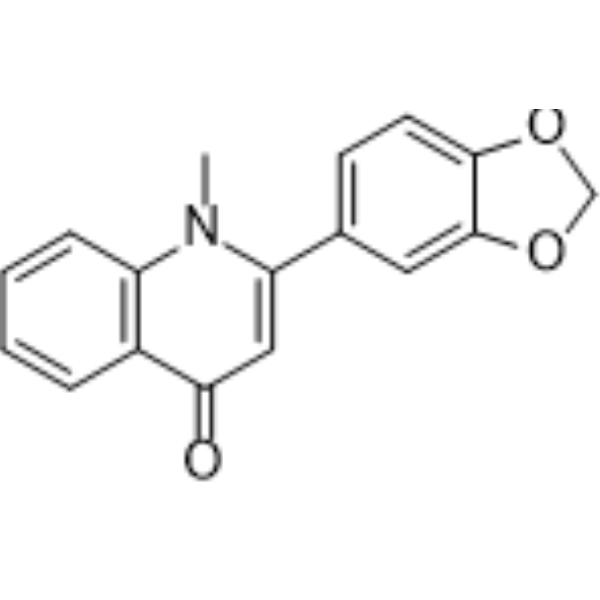
-
- HY-P9978
-
|
|
PD-1/PD-L1
|
Cancer
|
|
Toripalimab is the first domestic anti-tumor PD-1 antibody in China. Toripalimab is a selective, recombinant, humanized monoclonal antibody against PD-1. Toripalimab is able to bind to PD-1 and block the interaction with its ligands. Toripalimab has exhibited primary anti-tumor effects in tumors such as melanoma, lung cancer, digestive tract tumors, hepatobiliary and pancreatic tumors, neuroendocrine neoplasms, nasopharyngeal carcinoma and urothelial carcinoma .
|
-

-
- HY-156551
-
|
|
Wnt
|
Cancer
|
|
Porcn-IN-2 (Example 107) is a Wnt inhibitor, with an IC50 value of 0.05 nM. Porcn-IN-2 can be used for research of cancer, sarcoma, melanoma, skin cancer, haematological tumors, lymphoma, carcinoma, and leukemia, etc .
|
-
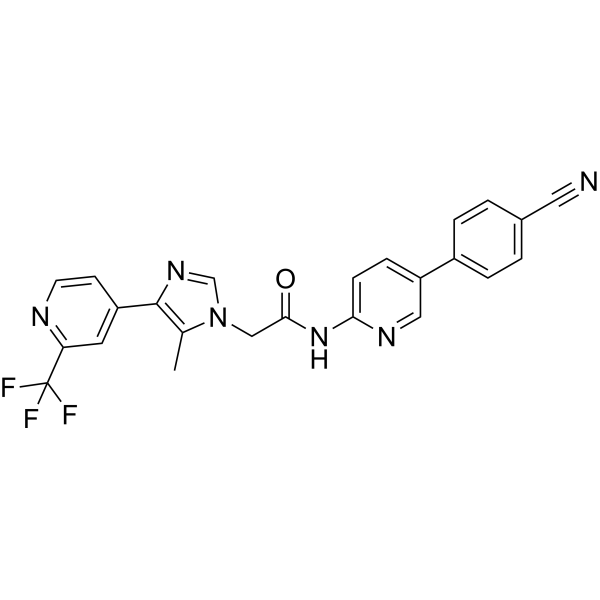
-
- HY-138098
-
|
|
Others
|
Cancer
|
|
Sartorypyrone B is a 2β-acetoxyl analogue of chevalone C. Sartorypyrone B is yielded from the ethyl acetate extract of the culture of the marine sponge-associated fungus Neosartorya tsunodae (KUFC 9213). Sartorypyrone B exhibits strong growth inhibitory activity, having GI50s of 17.8, 20.5, and 25.0 μM, respectively, for MCF-7, NCI-H460, and A375-C5. Sartorypyrone B has the potential for the research of breast adenocarcinoma, non-small cell lung cancer, and melanoma diseases .
|
-

-
- HY-146154
-
|
|
EGFR
|
Cancer
|
|
EGFR-IN-58 (Compound 4a) is a potent, ATP-competitive, and selective EGFR inhibitor. EGFR-IN-58 shows potent cytotoxicity against melanoma, colon, and blood cancers .
|
-
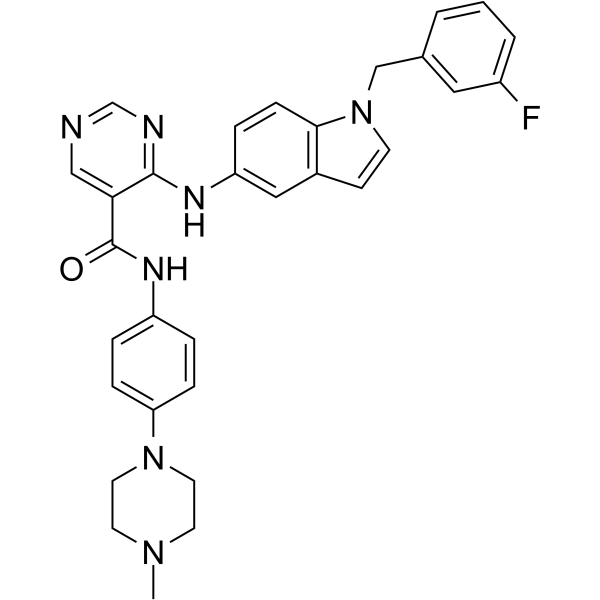
-
- HY-102010
-
|
(+)-Pancratistatin
|
Apoptosis
|
Cancer
|
|
Pancratistatin is an isoquinoline alkaloid that can be isolated from Hymenocallis littoralis. Pancratistatin induces apoptosis of human melanoma cells. Pancratistatin can be used for the research of neuroblastoma, leukemia and breast cancer .
|
-

-
- HY-N0610AS
-
|
3-Phenylacrylic acid-d6; β-Phenylacrylic acid-d6
|
Endogenous Metabolite
|
Cancer
|
|
Cinnamic acid-d6 is the deuterium labeled Cinnamic acid. Cinnamic acid has potential use in cancer intervention, with IC50s of 1-4.5 mM in glioblastoma, melanoma, prostate and lung carcinoma cells.
|
-

-
- HY-151587
-
|
|
Others
|
Cancer
|
|
Anticancer agent 89 is a benzothiazole-2-thiophene S-glycoside derivative with antitumor activity, has high inhibition against the three cell line from ovarian cancer (OVCAR-4), renal cancer (A498), and melanoma (SK-MEL-5) .
|
-
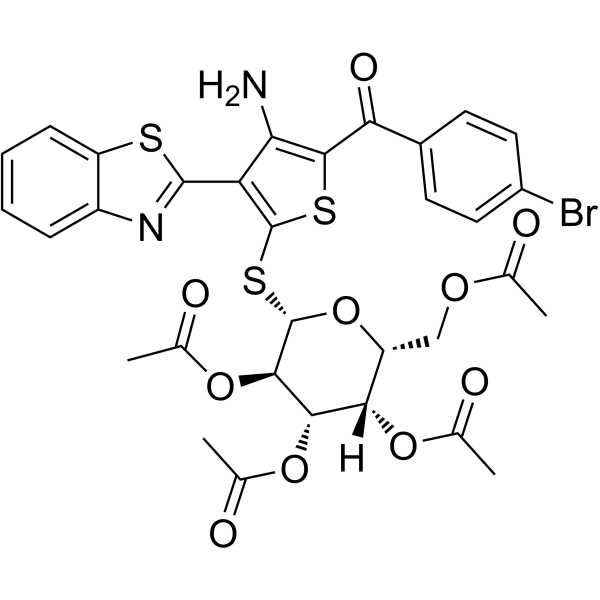
-
- HY-111898
-
|
|
Others
|
Cancer
|
|
Epirosmanol is a nature diterpene lactone from S. officinalis. Epirosmanol shows anti-cancer activity and inhibits melanin biosynthesis against melanoma cells. Epirosmanol also exhibits DPPH radical scavenging activity .
|
-
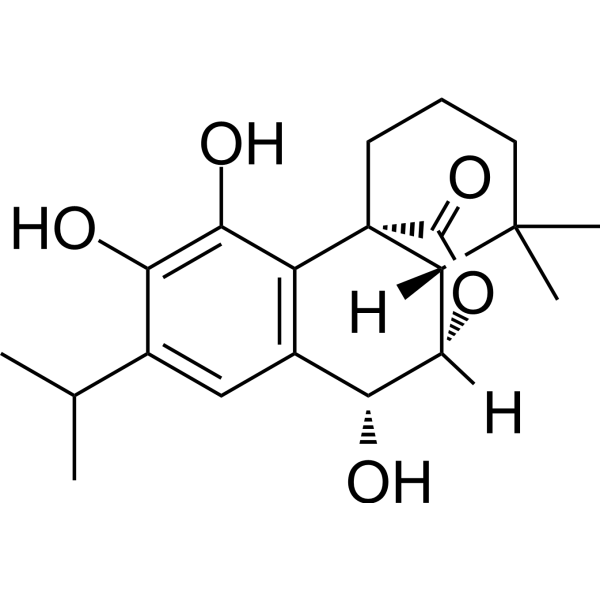
-
- HY-N0840
-
|
(-)-Bruceantin; NCI165563; NSC165563
|
Others
|
Cancer
|
|
Bruceantin(NSC165563) is first isolated from Brucea javanica, a tree used in Ethiopia for the treatment of cancer, and activity was observed against B16 melanoma, colon 38, and L1210 and P388 leukemia in mice.
|
-
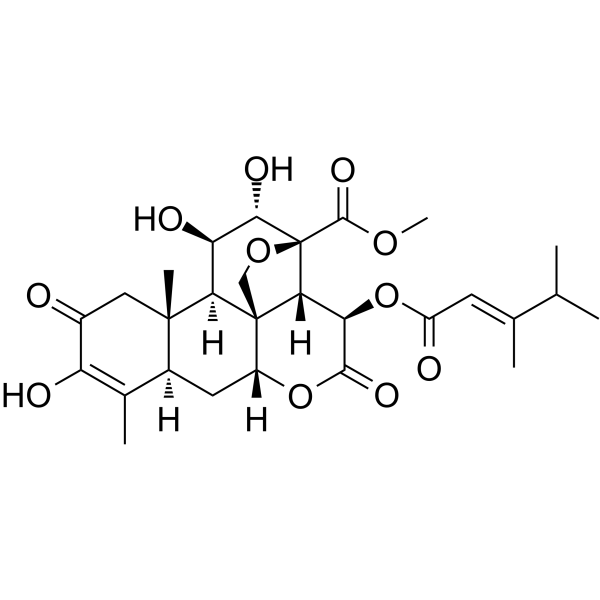
-
- HY-100012
-
|
|
Phosphoglycerate Dehydrogenase (PHGDH)
|
Cancer
|
|
CBR-5884 is an active, selective inhibitor of phosphoglycerate dehydrogenase (PHGDH) with an IC50 of 33 μM. CBR-5884 inhibits de novo serine synthesis in cancer cells and is selectively toxic to cancer cell lines with high serine biosynthetic activity. CBR-5884 selectively inhibits the proliferation of melanoma and breast cancer lines that have a high propensity for serine synthesis .
|
-
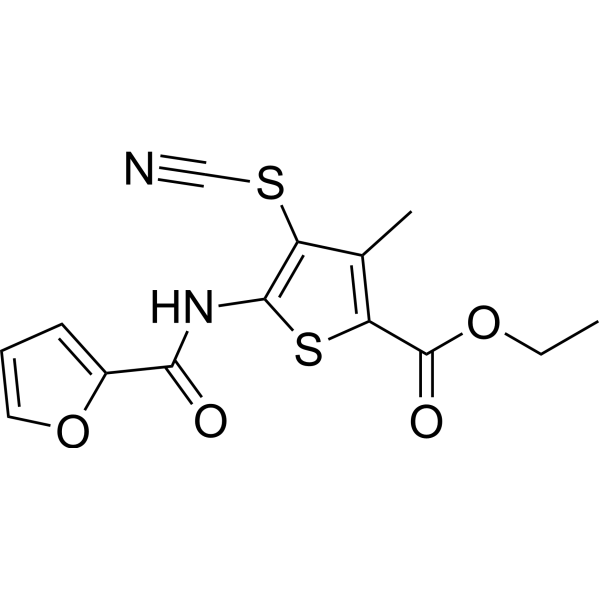
-
- HY-163076
-
|
|
Others
|
Others
|
|
Anticancer agent 174 (BA-3) is an anticancer agent. Anticancer agent 174 induces tumor cell apoptosis through the mitochondrial pathway. Anticancer agent 174 inhibits cancer cell proliferation in melanoma mouse xenograft model .
|
-
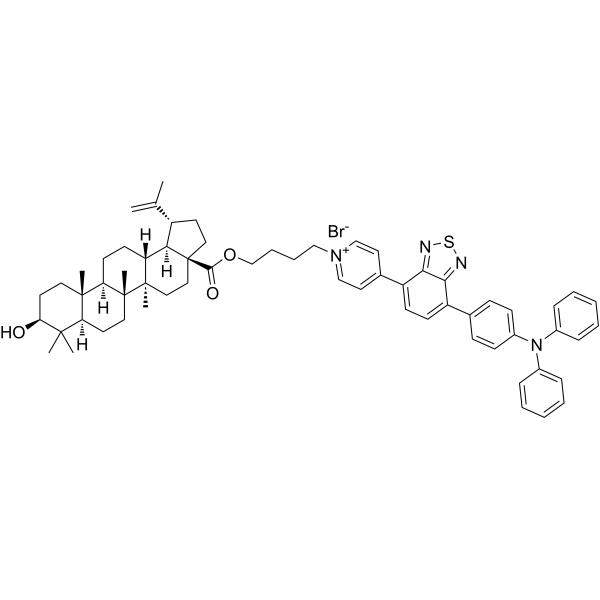
-
- HY-120607
-
|
|
Parasite
|
Infection
Cancer
|
|
Chevalone C, a meroterpenoid fungal metabolite, shows antimalarial activity with IC50 value of 25.00 μg/mL. Chevalone C has anti-proliferative activity on colon HCT116, liver HepG2 and melanoma A375 cancer cell lines .
|
-
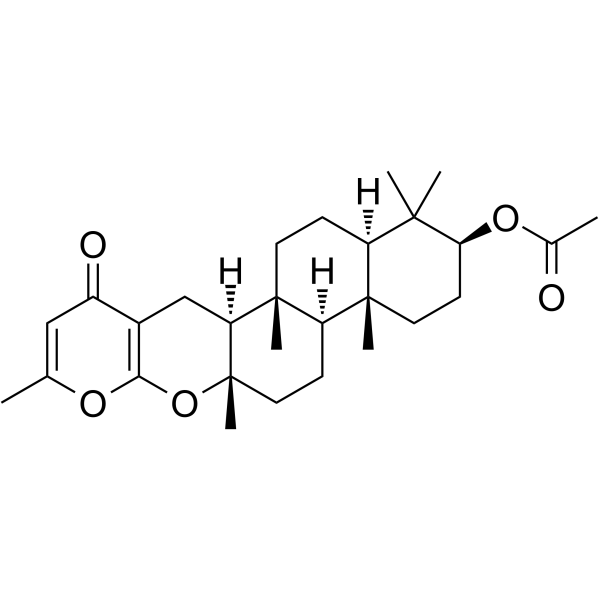
-
- HY-N2602
-
|
|
MDM-2/p53
|
Cancer
|
|
Sanggenol L induces caspase-dependent and caspase-independent apoptosis in melanoma skin cancer cells . Sanggenol L induces of apoptosis via suppression of PI3K/Akt/mTOR signaling and cell cycle arrest via activation of p53 in p
|
-
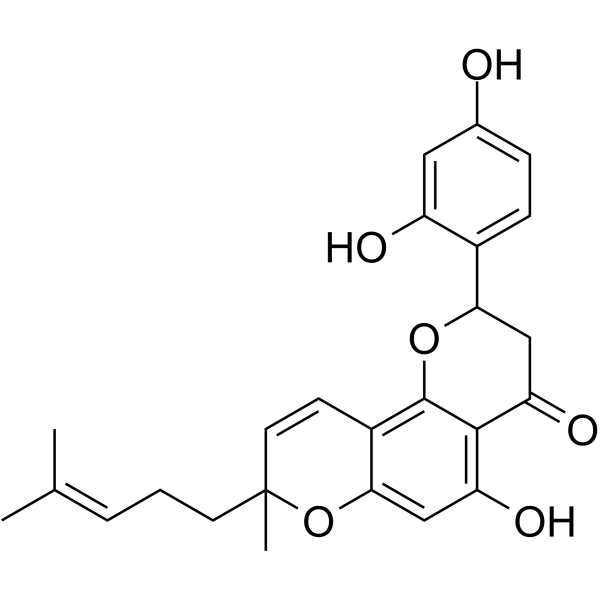
-
- HY-120599
-
|
VERU-111; ABI-231
|
Microtubule/Tubulin
Apoptosis
HPV
|
Cancer
|
|
VERU-111 (ABI-231) is a potent and orally active α and β tubulin inhibitor, which displays strong antiproliferative activity, with an average IC50 of 5.2 nM against panels of melanoma and prostate cancer cell lines. VERU-111 (ABI-231) suppresses tumor growth and metastatic phenotypes of cervical cancer cells via targeting HPV E6 and E7, and has potential for the treatment of prostate cancer .
|
-
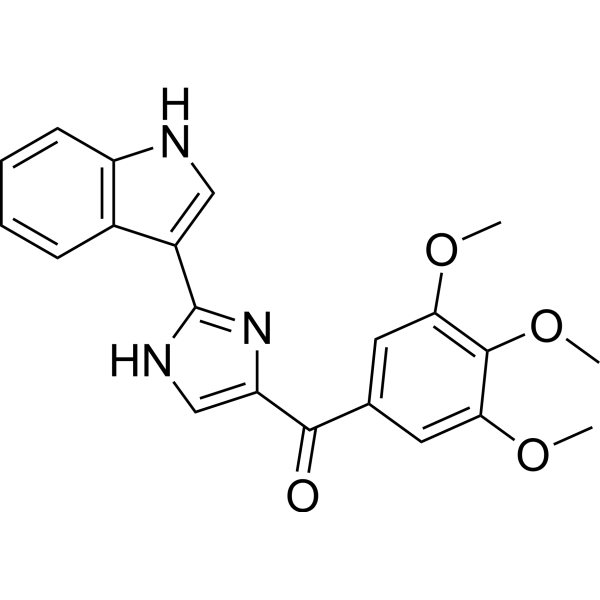
-
- HY-147268
-
|
RAF/KIN_2787
|
Raf
p38 MAPK
|
Cancer
|
|
Exarafenib (RAF/KIN_2787) is an orally-available, selective pan-RAF inhibitor. Exarafenib is effective in RAF-dependent cancers, including all classes of BRAF alterations. Exarafenib suppresses MAPK signaling in RAF-dependent melanoma cell lines. Exarafenib has anticancer activity .
|
-

-
- HY-12842
-
|
|
IAP
Apoptosis
|
Cancer
|
|
UC-112 is a novel potent IAP(Inhibitor of apoptosis) inhibitor; potently inhibit cell growth in two human melanoma (A375 and M14) and two human prostate (PC-3 and DU145) cancer cell lines(IC50=0.7-3.4 uM).
|
-
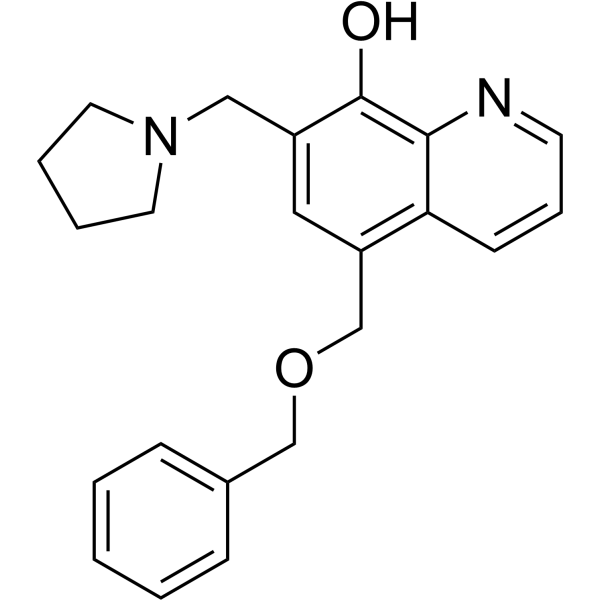
-
- HY-N0610AS2
-
|
3-Phenylacrylic acid-13C3; β-Phenylacrylic acid-13C3
|
Isotope-Labeled Compounds
Endogenous Metabolite
|
Cancer
|
|
Cinnamic acid- 13C3 (3-Phenylacrylic acid- 13C3) is the 13C labeled Cinnamic acid (HY-N0610A). Cinnamic acid has potential use in cancer intervention, with IC50s of 1-4.5 mM in glioblastoma, melanoma, prostate and lung carcinoma cells .
|
-

-
- HY-N11644
-
|
|
Others
|
Cancer
|
|
Lanosta-7,9(11),24-trien-3α-hydroxy-26-oic acid, also known as ganoderic acid 24. Lanosta-7,9(11),24-trien-3α-hydroxy-26-oic acid shows high cytotoxicity against cancer cells, such as human lung cancer cells CH27, melanoma cells M21, and oral cancer cells HSC-3 .
|
-

-
- HY-115885
-
|
|
HDAC
|
Inflammation/Immunology
Cancer
|
|
XP5 is a potent, orally active HDAC6 inhibitor with an IC50 of 31 nM. XP5 displays high antiproliferative activity against various cancer cell lines including the HDACi-resistant YCC3/7 gastric cancer cells (IC50=0.16-2.31 μM). XP5 enhances antitumor immunity when combined with a PD-L1 inhibitor in melanoma .
|
-

-
- HY-163136A
-
|
|
Autophagy
REV-ERB
|
Cancer
|
|
Autophagy/REV-ERB-IN-1
hydrochloride (Compound 24) is a dual autophagy and REV-ERB inhibitor with
anticancer activity. Autophagy/REV-ERB-IN-1 (hydrochloride) has improved
potency in blocking autophagy, enhanced toxicity against cancer cells.
Autophagy/REV-ERB-IN-1 (hydrochloride) can be used for the research for
melanoma .
|
-
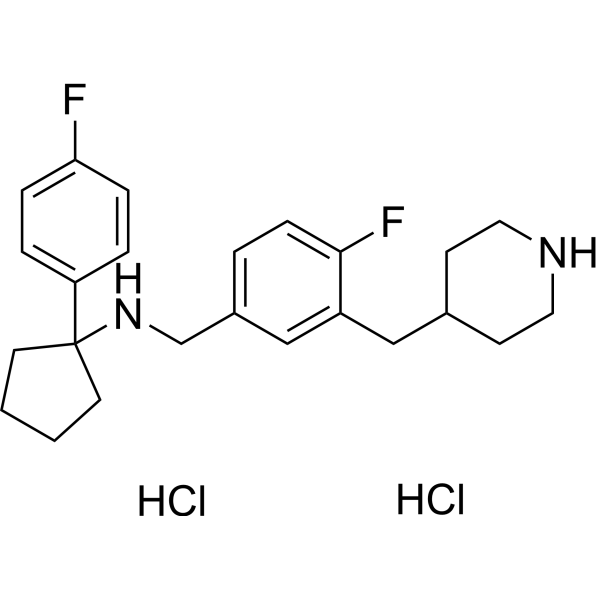
-
- HY-N0421
-
|
Cinobufagine
|
Apoptosis
|
Neurological Disease
Cancer
|
|
Cinobufagin is an anticancer agent that can be secreted by the Asiatic toad Bufo gargarizans. Cinobufagin induces the cell cycle arrests in the G1 phase or G2/M phase, leading to apoptosis in cancer cells. Cinobufagin inhibits tumor growth in melanoma and glioblastoma multiforme xenograft mouse models .
|
-

-
- HY-N0288
-
|
|
Fatty Acid Synthase (FASN)
Virus Protease
Bacterial
Apoptosis
|
Inflammation/Immunology
Cancer
|
|
Lycorine is a natural alkaloid extracted from the Amaryllidaceae plant. Lycorine is a potent and orally active SCAP inhibitor with a Kd value 15.24 nM. Lycorine downregulates the SCAP protein level without changing its transcription . Lycorine is also a melanoma vasculogenic inhibitor . Lycorine can be used for the study of prostate cancer and metabolic diseases .
|
-
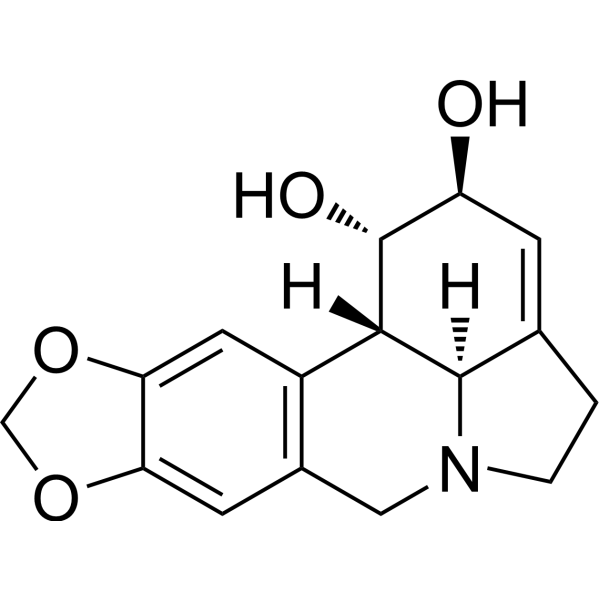
-
- HY-13591
-
|
IB-MECA; CF-101
|
Adenosine Receptor
Apoptosis
|
Inflammation/Immunology
Cancer
|
|
Piclidenoson (IB-MECA) is a first-in-class, orally active and selective A3 adenosine receptor (A3AR) agonist. Piclidenoson exhibits antiproliferative effect and induces apoptosis in different cancer cell types like melanoma, leukemia. Piclidenoson can be used for the research of autoimmune inflammatory diseases and COVID-19 .
|
-
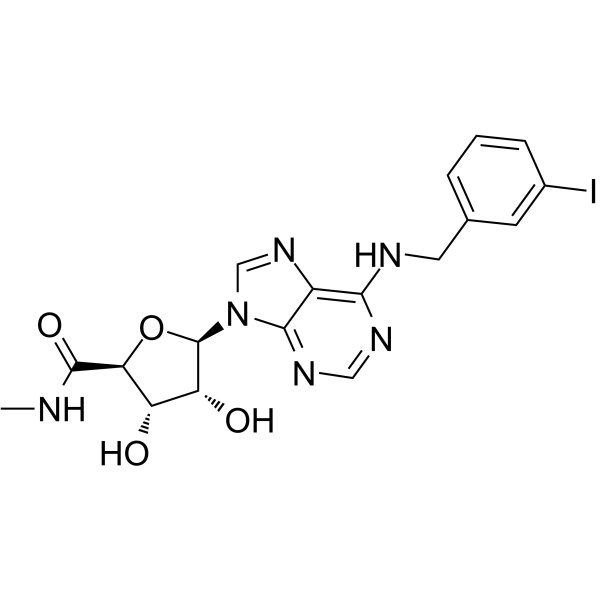
-
- HY-147734
-
|
|
Others
|
Cancer
|
|
Calpain inhibitors are lipophilic and show moderate to good antiproliferative activity in vitro compared with melanoma cell lines (a-375 and b-16f1) and PC-3 prostate cancer cells. In addition, a member of this group (compound 3) expressed 2 μ M concentration inhibited the invasion of DU-145 cells by 80%.
|
-
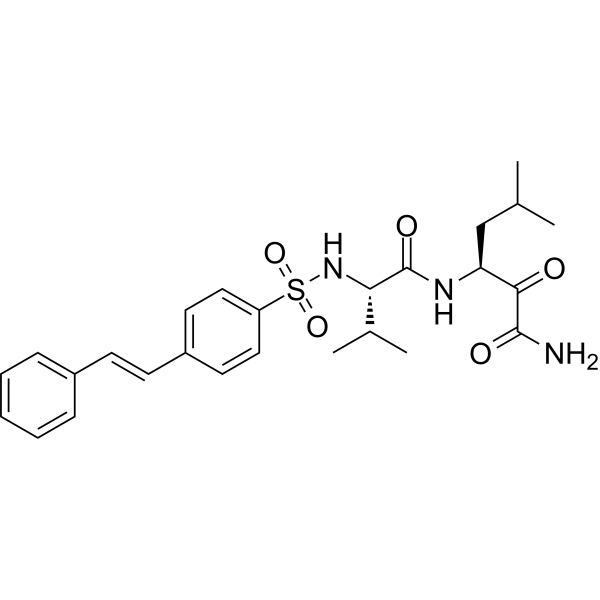
-
- HY-147855
-
|
|
ERK
Apoptosis
|
Cancer
|
|
ACA-28 (compound 2a) is a potent ERK MAPK signaling modulator. ACA-28 selectively inhibits cancer cell growth by inducing apoptosis with ERK hyperactivation
ACA-28 inhibits cell growth of melanoma cells (SK-MEL-28) and normal melanocytes (NHEM), with IC50 values of 5.3 and 10.1 μM, respectively .
|
-
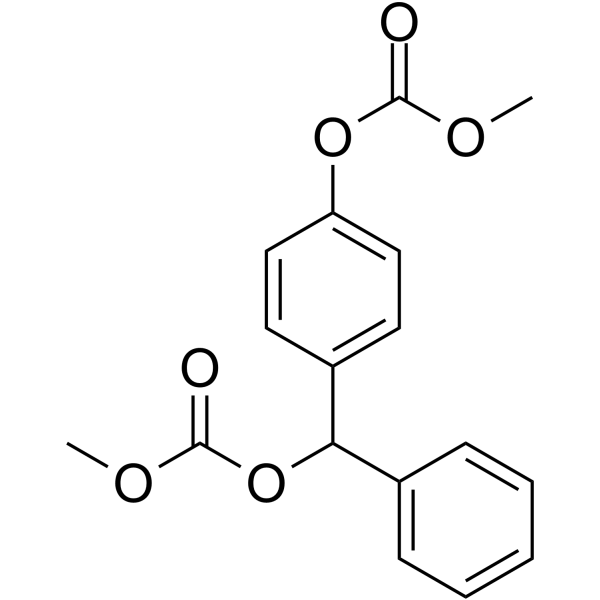
-
- HY-152479
-
|
|
Topoisomerase
|
Cancer
|
|
Topoisomerase IIα-IN-7 is an DNA topoisomerase IIα inhibitor with an IC50 value of 7.7 µM. Topoisomerase IIα-IN-7 has broad-spectrum cytotoxicity to leukemia, lung, colon, melanoma, ovarian, kidney, prostate and breast cancer cells. Topoisomerase IIα-IN-7 has metabolic stability .
|
-
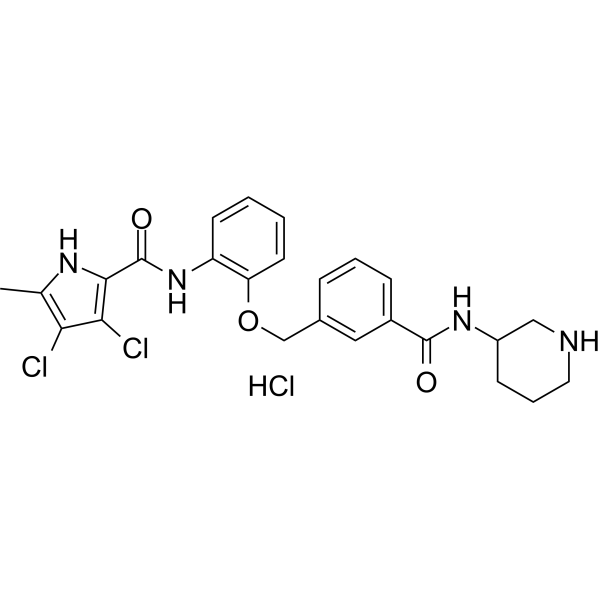
-
- HY-155240
-
|
|
Tyrosinase
|
Cancer
|
|
Tyrosinase-IN-13 (compound 3c), a derivative of Flurbiprofen (HY-10582), is a potent, non-competitive tyrosinase inhibitor (IC50=68 μM; Ki=36.3 μM). Tyrosinase-IN-13 is cytotoxic against hepatocellular carcinoma (HepG2), colorectal cancer (HT-29), and melanoma (B16F10) .
|
-

-
- HY-N8207
-
|
|
Apoptosis
MicroRNA
|
Cancer
|
|
Gypenoside LI, a gypenoside monomer, possesses anti-tumor activity. Gypenoside LI induces cell apoptosis, cell cycle and migration .
|
-
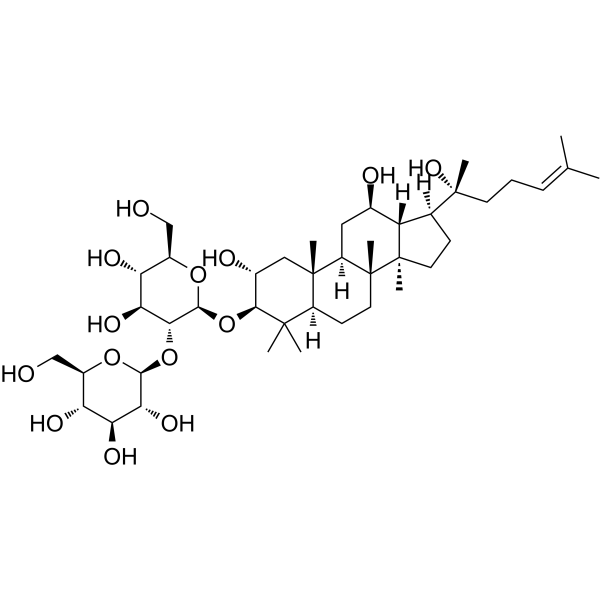
-
- HY-149471
-
|
|
Tyrosinase
|
Cancer
|
|
hTYR/AbTYR-IN-1 (Compound 7) is a hTYR/AbTYR dual inhibitor, with IC50s of 5.4 μM and 3.52 μM for hTYR and AbTYR respectively .
|
-
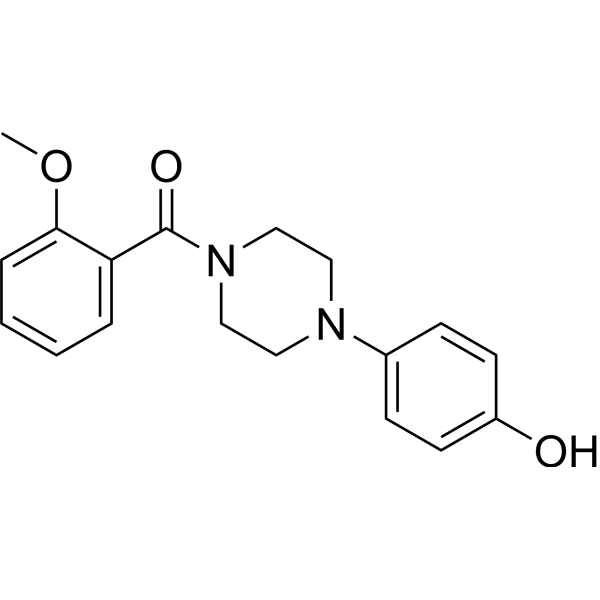
- HY-149519
-
|
|
Epigenetic Reader Domain
|
Cancer
|
|
BRD4 Inhibitor-28 (Compound 18) is an orally active BRD4 Inhibitor. BRD4 Inhibitor-28 inhibits BRD40-BD1, BRD40-BD2 with IC50s of 15, 55 nM. BRD4 Inhibitor-28 also inhibits BRD2-BD1, BRD3-BD1, BRDT-BD1 with IC50s of 19, 25, 68 nM. BRD4 Inhibitor-28 has anti-melanoma activity .
|
-
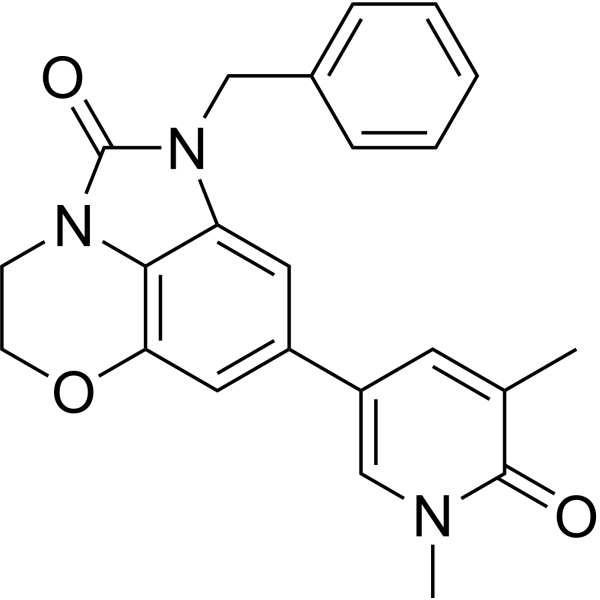
- HY-150510
-
|
|
Histone Methyltransferase
|
Neurological Disease
Cancer
|
|
MS8511 is a selective G9a/GLP covalent irreversible inhibitor by targeting a cysteine residue at the substrate binding site, with IC50 values of 100 nM (G9a) and 140 nM (GLP), and Kd values of 44 nM (G9a) and 46 nM (GLP). MS8511 reduces the cellular H3K9me2 level and enhances antiproliferation activity. MS8511 can be used for the research of several types of cancers including brain, breast, ovarian, lung, bladder, melanoma, colorectal cancer, and other disease such as Alzheimer’s disease (AD), sickle cell disease, Prader−Willi syndrome (PWS) .
|
-

- HY-153425
-
|
|
PROTACs
|
Cancer
|
|
PROTAC SMARCA2 degrader-2 is a potent and selective SMARCA2/4 PROTAC degrader with an IC50 of <0.1 μΜ in HeLa HiBiT assay. PROTAC SMARCA2 degrader-2 is extracted from patent WO2023287787A1 and has the potential for SMARCA4-related or deficient cancer research .
|
-

- HY-15150G
-
|
R428 (GMP); BGB324 (GMP)
|
TAM Receptor
|
Cancer
|
|
Bemcentinib (R428) GMP is an orally active and selective inhibitor of Axl with an IC50 of 14 nM .
|
-
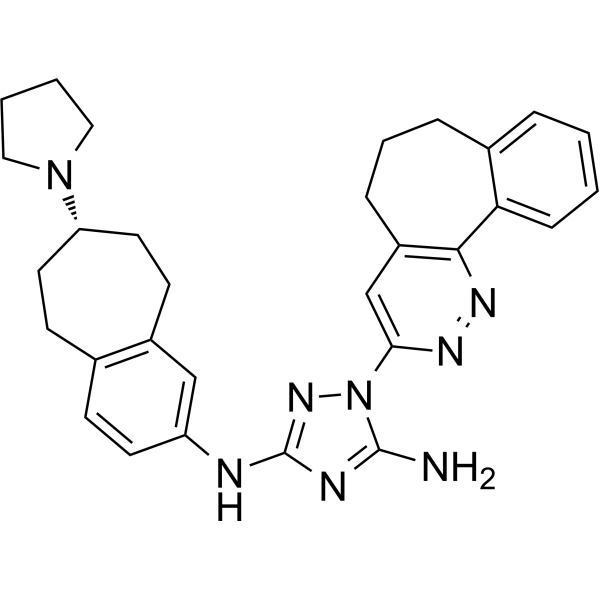
- HY-N2466
-
|
MT-I; [Nle4,D-Phe7]-α-MSH
|
Melanocortin Receptor
|
Neurological Disease
Cancer
|
|
Melanotan I is a potent non-selective melanocortin receptor (MCR) agonist. Melanotan I is a synthetic analogue of α-melanocyte stimulating hormone (α-MSH) that stimulates melanogenesis. Melanotan I can induce skin tanning by mimicking the actions of a-MSH on the melanocortin type 1 receptors (MC1R) of melanocytes. Melanotan I can be used for the research of sun-induced skin cancer, melanoma, inflammation and male erectile dysfunction .
|
-

- HY-149523
-
|
|
Apoptosis
NO Synthase
Caspase
|
Inflammation/Immunology
Cancer
|
|
Anticancer agent 157 (compound 15) is a NO inhibitor (IC50=0.62 μg/mL) with anti-inflammatory and anticancer activities. Anticancer agent 157 can bind to iNOS (inducible NO synthase) and caspase 8, causing nuclear fragmentation and chromatin condensation, inducing apoptosis. Anticancer agent 157 inhibits HT29 colon cancer cells (IC50=2.45 μg/mL), Hep-G2 liver cancer cells (IC50=3.25 μg/mL), and B16-F10 murine melanoma cells (IC50=3.84 μg/mL) .
|
-

- HY-138799
-
|
|
HDAC
|
Cancer
|
|
KA2507 is a potent, orally active and selective HDAC6 inhibitor, with an IC50 of 2.5 nM. KA2507 shows antitumor activities and immune modulatory effects in preclinical models .
|
-
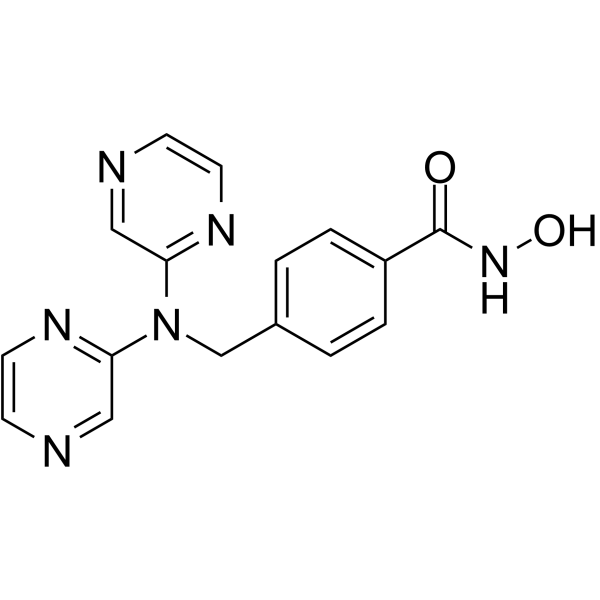
- HY-138799A
-
|
|
HDAC
|
Inflammation/Immunology
Cancer
|
|
KA2507 hydrochloride is a potent and highly selective inhibitor of HDAC6 (IC50=2.5 nM) with no significant toxicities. KA2507 hydrochloride shows antitumor efficacy and immune modulatory effects .
|
-
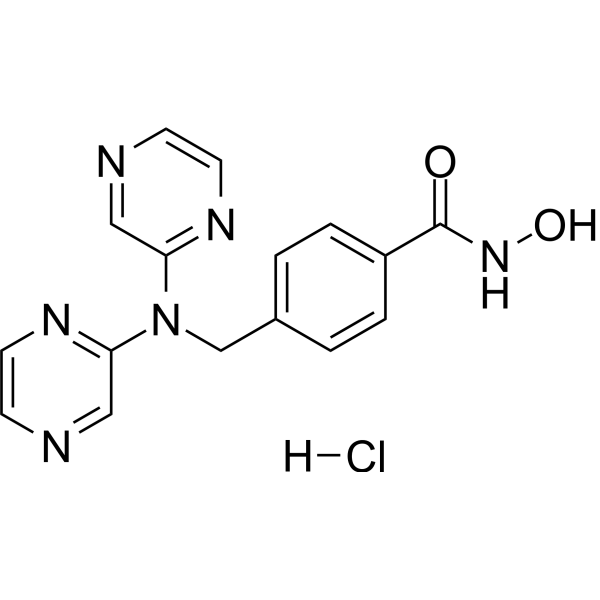
- HY-157800
-
|
TRX-E-009-1
|
Microtubule/Tubulin
Apoptosis
PARP
Caspase
|
Cancer
|
|
Trilexium (TRX-E-009-1) is a third-generation of benzopyran structurally related to TRX-E-002-1 (HY-114250). Trilexium increases p21 protein expression and induces apoptosis. Trilexium depolymerizes microtubules. Trilexium shows broad anti-cancer activity .
|
-

- HY-134463
-
|
|
Epigenetic Reader Domain
Apoptosis
|
Cancer
|
|
NHWD-870 is a potent, orally active and selective BET family bromodomain inhibitor and only binds bromodomains of BRD2, BRD3, BRD4 (IC50=2.7 nM), and BRDT. NHWD-870 has potent tumor suppressive efficacies and suppresses cancer cell-macrophage interaction. NHWD-870 increases tumor apoptosis and inhibits tumor proliferation .
|
-
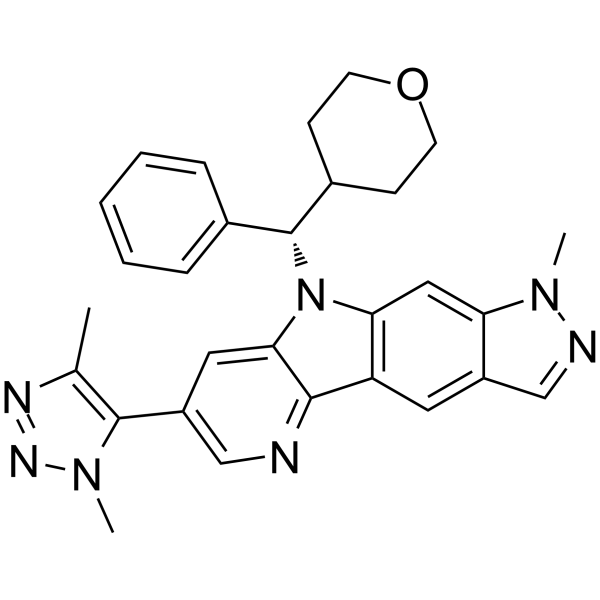
- HY-149380
-
|
|
Raf
|
Cancer
|
|
Vem-L-Cy5 (compound 3),modified with the NIR fluorophore cyanine-5 (Cy5),is a Vemurafenib (HY-12057)-based inhibitor of BRAF. Vem-L-Cy5 targets to BRAF V600E,and also inhibits MEK phosphorylation. Vem-L-Cy5 has cell permeability,and inhibits cell growth of many types of cancer .
|
-

- HY-155101
-
|
|
PD-1/PD-L1
|
Cancer
|
|
PD-L1-IN-3 (Compound 4a) is a compound that targets PD-1/PD-L1, the IC50 value and EC50 value is 4.97nM and 2.70 μM for inhibit PD-L1 and Jurkat T cells, respectively. PD-L1-IN-3 can bind PD-L1 dimer to prevent PD-1 binding to PD-L1, therefore blocking PD-1 signaling. PD-L1-IN-3 can be used for lung cancer and melanoma diseases research .
|
-
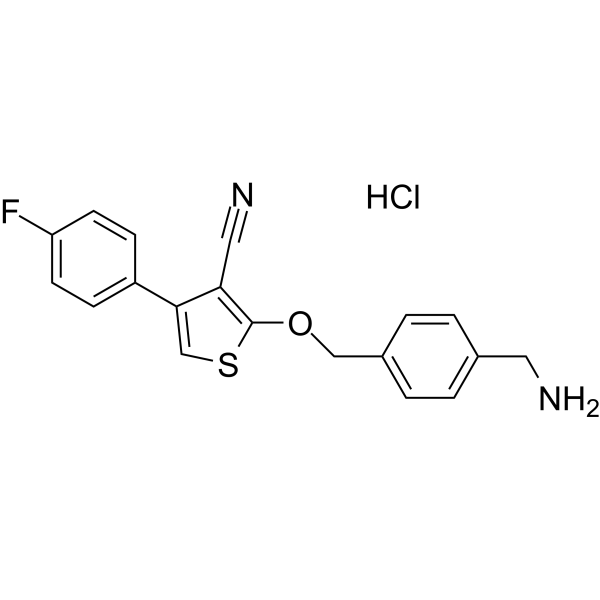
- HY-15792
-
|
10,11-(Methylenedioxy)-20(R)-camptothecin
|
Others
|
Cancer
|
|
(R)-FL118 (10,11-(Methylenedioxy)-20(R)-camptothecin) is the R-enantiomer of FL118 (HY-12486). (R)-FL118 shows anticancer activity .
|
-

- HY-15217
-
|
|
Haspin Kinase
|
Cancer
|
|
CHR-6494 is a potent inhibitor of haspin, with an IC50 of 2 nM. CHR-6494 inhibits histone H3T3 phosphorylation. CHR-6494 can be used in the research of cancer .
|
-
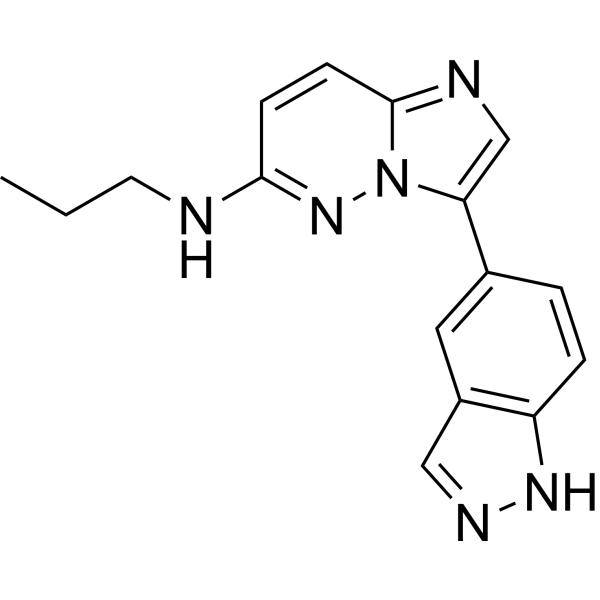
- HY-15028
-
|
ATB-346
|
COX
Apoptosis
|
Inflammation/Immunology
|
|
Otenaproxesul (ATB-346), an orally active non-steroidal anti-inflammatory drug (NSAID), inhibits cyclooxygenase-1 and 2 (COX-1 and 2). Otenaproxesul possesses antiinflammatory and antinociceptive activities .
|
-
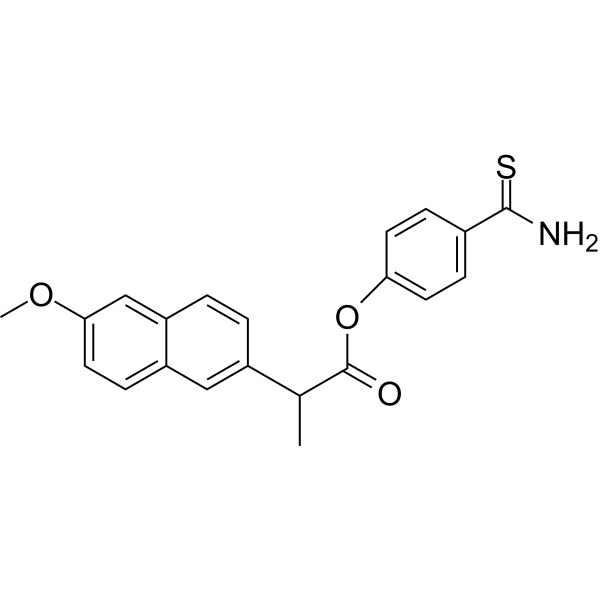
- HY-107780
-
|
c-di-GMP; cyclic diguanylate; 5GP-5GP
|
STING
Endogenous Metabolite
|
Cancer
|
|
Cyclic-di-GMP is a STING agonist and a bacterial second messenger that coordinates different aspects of bacterial growth and behavior, including motility, virulence, biofilm formation, and cell cycle progression. Cyclic-di-GMP has anti-cancer cell proliferation activity and also induces elevated CD4 receptor expression and cell cycle arrest. Cyclic-di-GMP can be used in cancer research .
|
-

- HY-107780A
-
|
c-di-GMP sodium; cyclic diguanylate sodium; 5GP-5GP sodium
|
STING
Endogenous Metabolite
|
Cancer
|
|
Cyclic-di-GMP sodium is a STING agonist and a bacterial second messenger that coordinates different aspects of bacterial growth and behavior, including motility, virulence, biofilm formation, and cell cycle progression. Cyclic-di-GMP sodium has anti-cancer cell proliferation activity and also induces elevated CD4 receptor expression and cell cycle arrest. Cyclic-di-GMP sodium can be used in cancer research .
|
-

- HY-131295
-
|
|
MEK
Ligands for Target Protein for PROTAC
|
Cancer
|
|
PD0325901-O-C2-dioxolane has main portion of MEK inhibitor PD0325901. PD0325901-O-C2-dioxolane and a ligand of VHL or CRBN E3 ligase can be used in the synthesis of MEK1/2 degrader .
|
-

- HY-103211
-
|
|
Adrenergic Receptor
|
Cardiovascular Disease
Metabolic Disease
Cancer
|
|
L748337 is a potent β3-adrenergic receptor antagonist and displays selectivity over β1 and β2 receptors. The Ki values of L748337 for β3-, β2- and β1-adrenoceptors are 4.0 nM, 204 nM and 390 nM, respectively . L748337 couples predominantly to Gi to activate MAPK signaling and increases phosphorylation of Erk1/2 with pEC50 value of 11.6 . L748337 can be used for the research of cancer, nonalcoholic fatty liver disease (NAFLD), and cardiovascular related diseases .
|
-
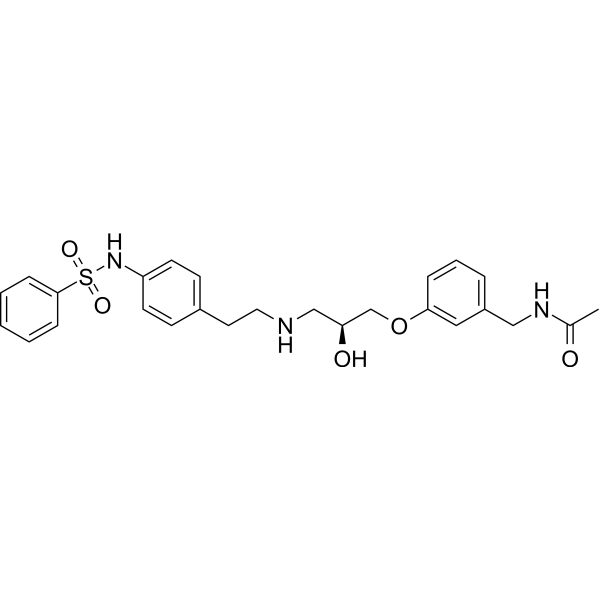
- HY-107780B
-
|
c-di-GMP diammonium; cyclic diguanylate diammonium; 5GP-5GP diammonium
|
STING
Endogenous Metabolite
|
Cancer
|
|
Cyclic-di-GMP diammonium is a STING agonist and a bacterial second messenger that coordinates different aspects of bacterial growth and behavior, including motility, virulence, biofilm formation, and cell cycle progression. Cyclic-di-GMP diammonium has anti-cancer cell proliferation activity and also induces elevated CD4 receptor expression and cell cycle arrest. Cyclic-di-GMP diammonium can be used in cancer research .
|
-

- HY-110382
-
|
c-di-GMP disodium; cyclic diguanylate disodium; 5GP-5GP disodium
|
STING
Endogenous Metabolite
|
Cancer
|
|
Cyclic-di-GMP disodium is a STING agonist and a bacterial second messenger that coordinates different aspects of bacterial growth and behavior, including motility, virulence, biofilm formation, and cell cycle progression. Cyclic-di-GMP disodium has anti-cancer cell proliferation activity and also induces elevated CD4 receptor expression and cell cycle arrest. Cyclic-di-GMP disodium can be used in cancer research .
|
-

- HY-147864
-
|
|
c-Fms
c-Kit
Apoptosis
|
Cancer
|
|
c-Fms-IN-12 (Compound 4g) is an FMS kinase inhibitor. c-Fms-IN-12 can also inhibits c-KIT. c-Fms-IN-12 is a potential broad-spectrum anticancer agent against multiple cancer types. c-Fms-IN-12 induces A549 cell apoptosis .
|
-
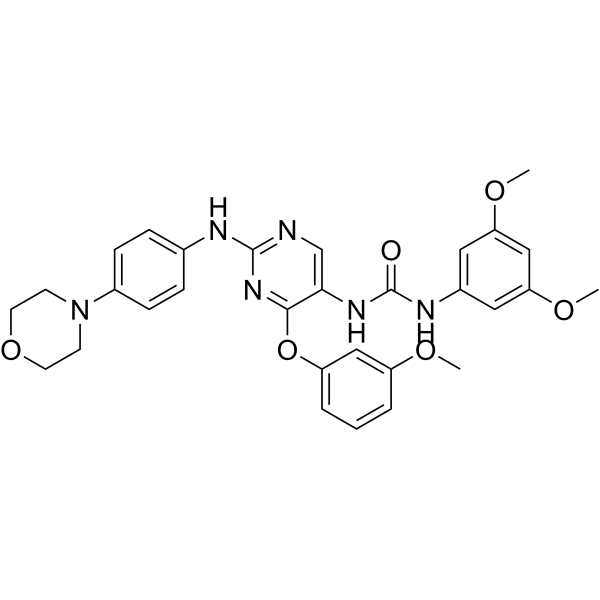
- HY-160218
-
|
|
MAP4K
|
Cancer
|
|
HPK1-IN-42 (compound 185) ia a HPK1 inhibitor with the IC50 50 of 0.24 nM .
|
-

- HY-B0150
-
Nicotinamide
Maximum Cited Publications
36 Publications Verification
Niacinamide; Nicotinic acid amide
|
Organoid
Endogenous Metabolite
Sirtuin
HBV
|
Cancer
|
|
Nicotinamide is a form of vitamin B3 or niacin. Nicotinamide Hydrochloride inhibits SIRT2 activity (IC50: 2 μM). Nicotinamide also inhibits SIRT1. Nicotinamide increases cellular NAD+, ATP, ROS levels. Nicotinamide inhibits tumor growth and improves survival. Nicotinamide also has anti-HBV activity .
|
-

- HY-16918A
-
|
SBi4211 dimethanesulfonate
|
Others
|
Inflammation/Immunology
Cancer
|
|
Heptamidine dimethanesulfonate (SBi4211 dimethanesulfonate) is a potent Pentamidine-related inhibitor of the calcium-binding protein S100B (Kd=6.9 μM), selectively kills melanoma cells with S100B over those without S100B . Heptamidine is a useful tool for the investigation of Myotonic dystrophy (DM) .
|
-

- HY-N7678
-
|
|
Others
|
Cancer
|
|
Gypenoside LXXV, isolated from Gynostemma pentaphyllum, is one of the deglycosylated shapes of ginsenoside Rb1. Gypenoside LXXV significantly reduces cancer cell viability and displays an anti-cancer effect .
|
-

- HY-17547
-
|
|
HSP
|
Cancer
|
|
NMS-E973 is a potent and selective inhibitor of HSP90. NMS-E973 binds to the ATP binding site of Hsp90α with a DC50 of <10 nM. NMS-E973 is able to cross the blood-brain barrier (BBB). Antitumor efficacy .
|
-

- HY-152263
-
|
|
PROTACs
CDK
Apoptosis
|
Cancer
|
|
HEMTAC CDK4/6 degrader 1 is a PROTAC connected by ligands for HSP90 and CDK4/6 with a Kd value of 35.7 μM. HEMTAC CDK4/6 degrader 1 induces CDK4/6 degradation in B16F10 melanoma cells. HEMTAC CDK4/6 degrader 1 arrests cell cycle at G0/G1 phase and induces apoptosis. HEMTAC CDK4/6 degrader 1 can be used in research of cancer . HEMTAC CDK4/6 degrader 1 is a click chemistry reagent, it contains an Alkyne group and can undergo copper-catalyzed azide-alkyne cycloaddition (CuAAc) with molecules containing Azide groups.
|
-

- HY-W011209
-
|
Riboprine
|
Autophagy
Endogenous Metabolite
|
Cancer
|
|
N6-Isopentenyladenosine (Riboprine), an RNA modification found in cytokinins, which regulate plant growth/differentiation, and a subset of tRNAs, where it improves the efficiency and accuracy of translation. N6-Isopentenyladenosine, an end product of the mevalonate pathway, is an autophagy inhibitor with an interesting anti-melanoma activity .
|
-

- HY-137605
-
|
|
Others
|
Cancer
|
|
WSF1-IN-1 (compound 136), an orally active WSF1 inhibitor, can be used in the study for WSF1 (Wolfram syndrome) related tumors, with IC50 values of 0.33 μM and >27 μM in HepG2 parental and HepG2 WFS1 KO cell lines, respectively .
|
-
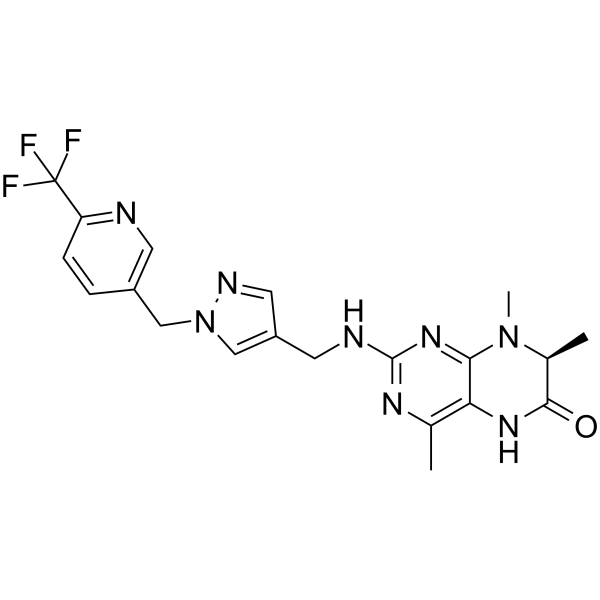
- HY-151409
-
|
|
CDK
|
Cancer
|
|
CDK1-IN-5 (10h) is a selective CDK1 inhibitor with IC50s of 42.19, 188.71 and 354.15 nM for CDK1, CDK2 and CDK5, respectively. CDK1-IN-5 inhibits growth of cancer cells by affecting cell cycle. CDK1-IN-5 can be used for the research of cancer .
|
-
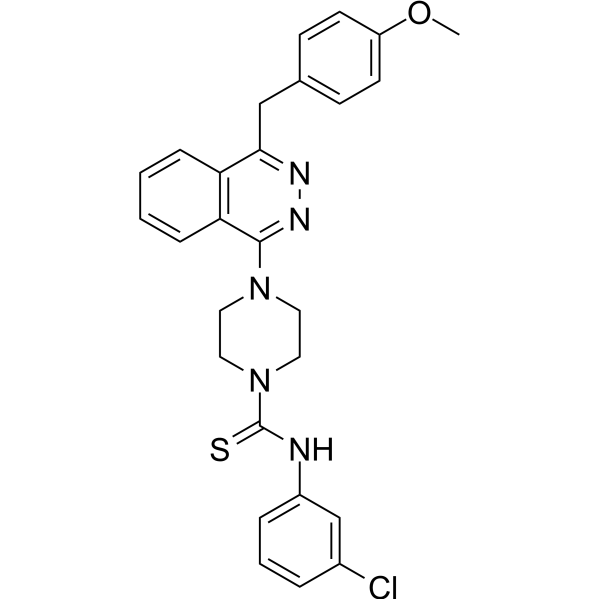
- HY-151407
-
|
|
CDK
|
Cancer
|
|
CDK1-IN-3 (8g) is a selective CDK1 inhibitor with IC50s of 36.8, 305.17 and 369.37 nM for CDK1, CDK2 and CDK5, respectively. CDK1-IN-3 inhibits the growth of cancer cells by affecting cell cycle. CDK1-IN-3 can be used for the research of cancer .
|
-
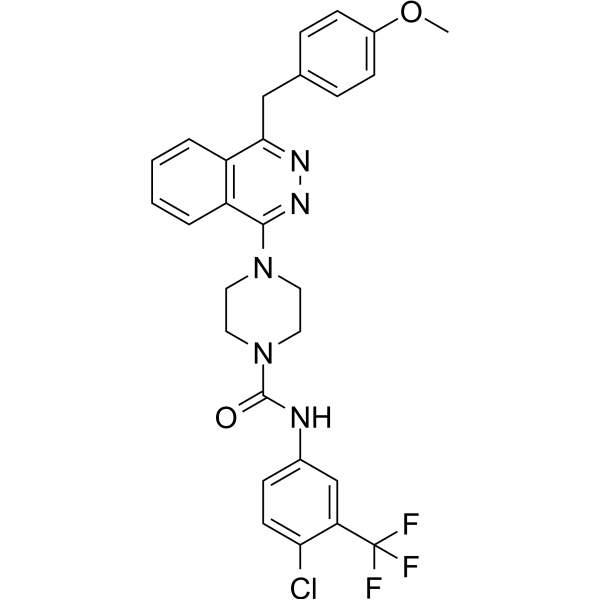
- HY-151408
-
|
|
CDK
|
Cancer
|
|
CDK1-IN-4 (10d) is a selective CDK1 inhibitor with IC50s of 44.52, 624.93 and 135.22 nM for CDK1, CDK2 and CDK5, respectively. CDK1-IN4 inhibits the growth of cancer cells by affecting cell cycle. CDK1-IN-4 can be used for the research of cancer .
|
-

- HY-157092B
-
|
|
ICMT
|
Cancer
|
|
(R)-ICMT-IN-3 (compound ent 2-27) is an inhibitor of ICMT (IC50=0.01 μM) .
|
-
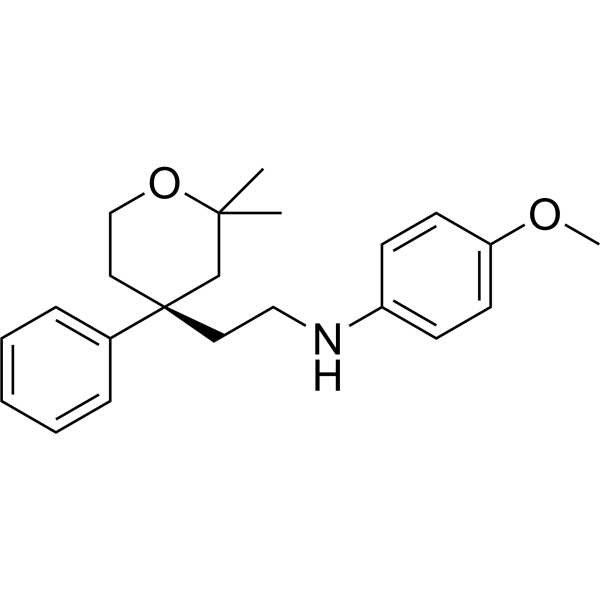
- HY-157092A
-
|
|
ICMT
|
Cancer
|
|
(S)-ICMT-IN-3 (compound ent 1-27) is an inhibitor of ICMT (IC50=0.23 μM) .
|
-
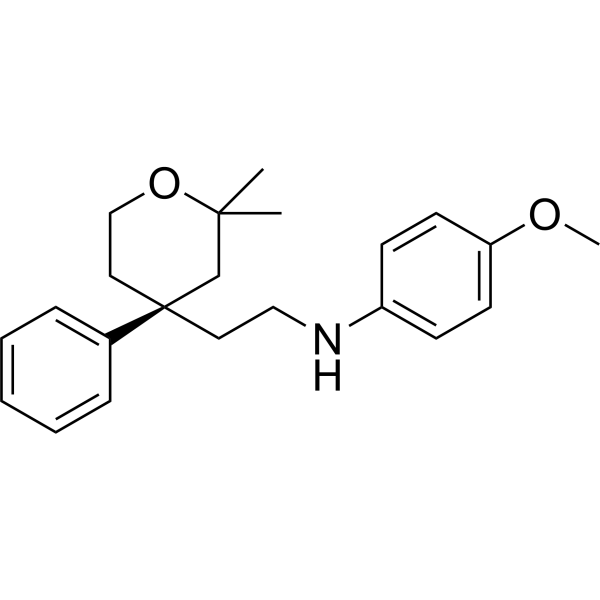
- HY-156500
-
|
|
ICMT
|
Cancer
|
|
ICMT-IN-1 (compound 75) is an inhibitor of ICMT (IC50=0.0013 μM). ICMT-IN-1 dose-dependently induces ICMT accumulation in the cytoplasm of HCT-116 cells and inhibits the proliferation of multiple cancer cell lines expressing K-Ras and N-Ras .
|
-
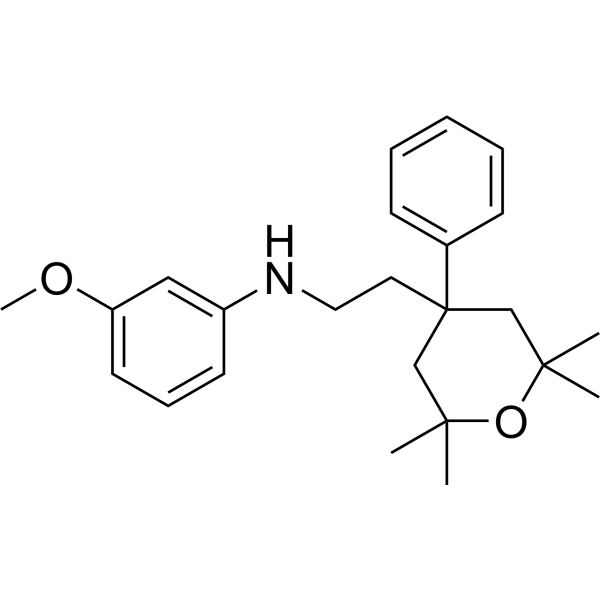
- HY-157097
-
|
|
ICMT
|
Cancer
|
|
ICMT-IN-10 (compound 32) is an inhibitor of ICMT (IC50=0.184 μM) .
|
-

- HY-155421
-
|
|
ICMT
|
Cancer
|
|
ICMT-IN-11 (compound 48) is an inhibitor of ICMT (IC50=0.031 μM) .
|
-
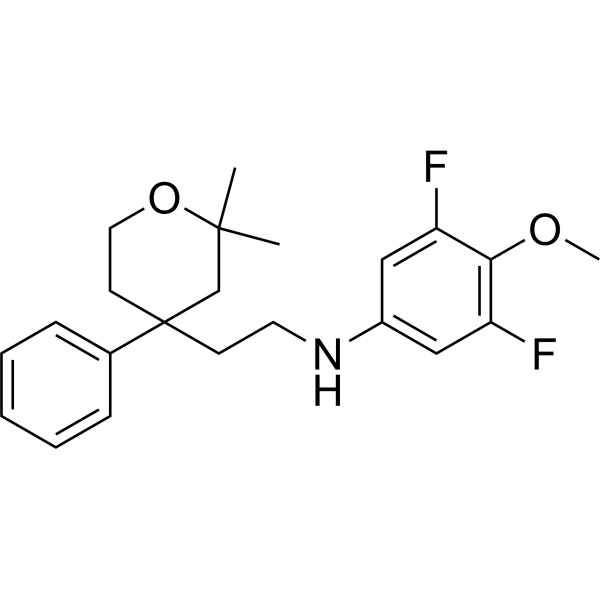
- HY-149706
-
|
|
ICMT
|
Cancer
|
|
ICMT-IN-12 (compound 78) is an inhibitor of ICMT (IC50=0.42 μM) .
|
-
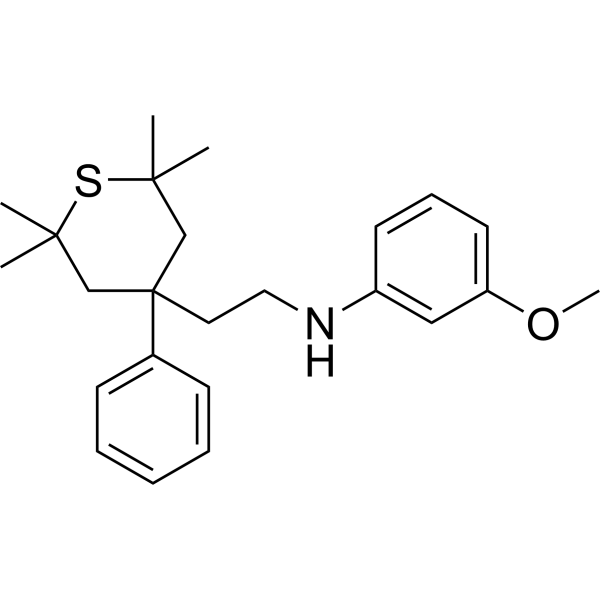
- HY-155422
-
|
|
ICMT
|
Cancer
|
|
ICMT-IN-13 (compound 49) is an inhibitor of ICMT (IC50=0.47 μM) .
|
-
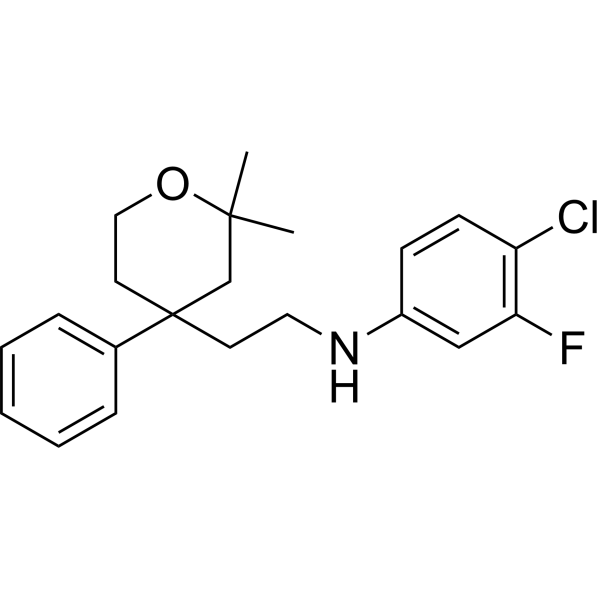
- HY-155423
-
|
|
ICMT
|
Cancer
|
|
ICMT-IN-14 (compound 50) is an inhibitor of ICMT (IC50=0.025 μM) .
|
-
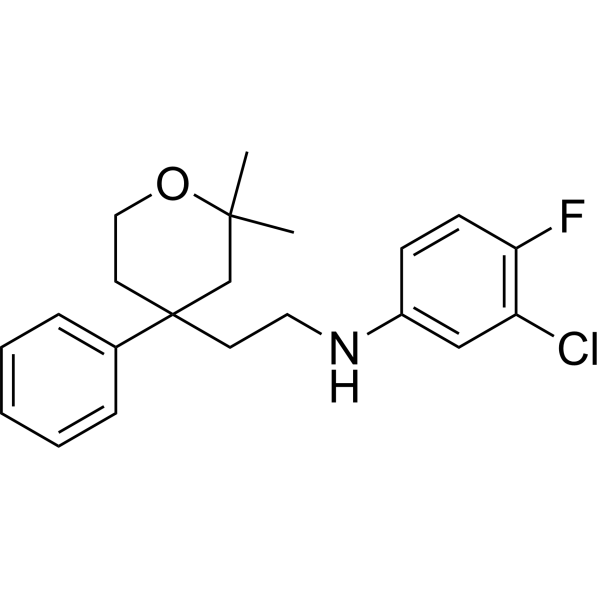
- HY-155424
-
|
|
ICMT
|
Cancer
|
|
ICMT-IN-15 (compound 51) is an inhibitor of ICMT (IC50=0.032 μM) .
|
-
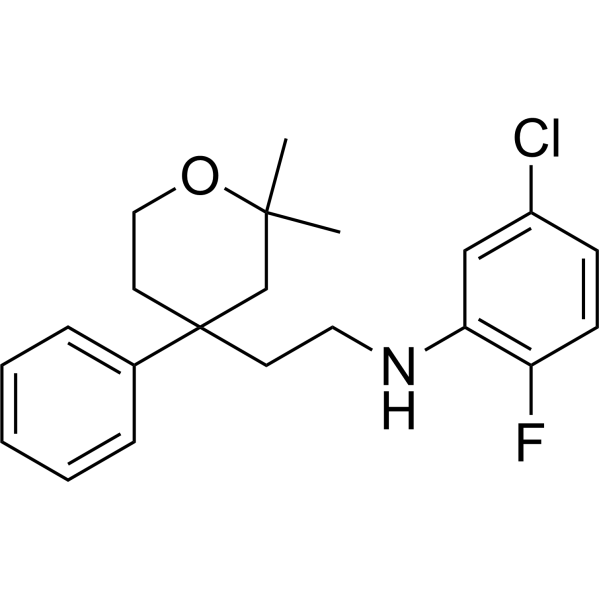
- HY-157098
-
|
|
ICMT
|
Cancer
|
|
ICMT-IN-16 (compound 33) is an inhibitor of ICMT (IC50=0.131 μM) .
|
-
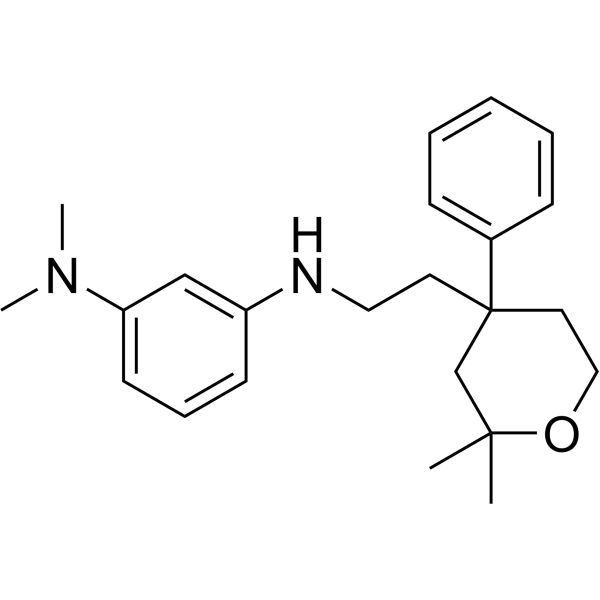
- HY-155425
-
|
|
ICMT
|
Cancer
|
|
ICMT-IN-17 (compound 52) is an inhibitor of ICMT (IC50=0.38 μM) .
|
-
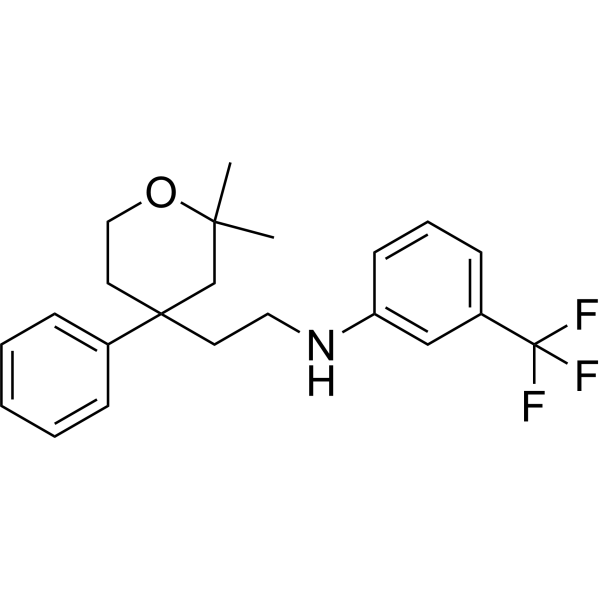
- HY-157099
-
|
|
ICMT
|
Cancer
|
|
ICMT-IN-18 (compound 35) is an inhibitor of ICMT (IC50=0.066 μM) .
|
-
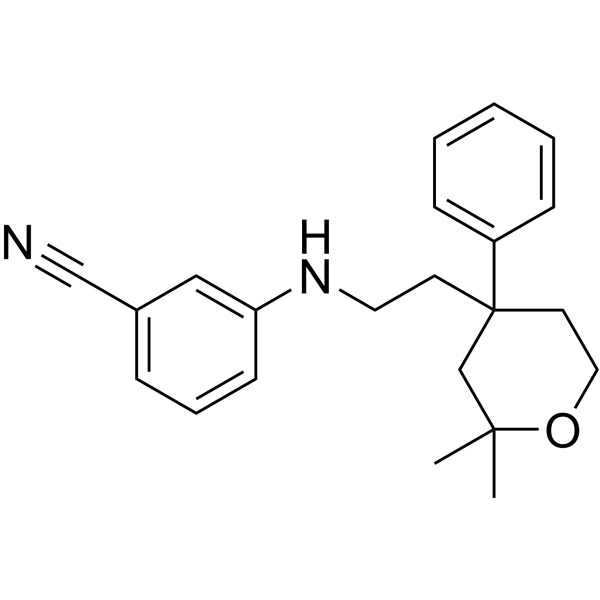
- HY-155426
-
|
|
ICMT
|
Cancer
|
|
ICMT-IN-19 (compound 53) is an inhibitor of ICMT (IC50=0.026 μM) .
|
-

- HY-155418
-
|
|
ICMT
|
Cancer
|
|
ICMT-IN-2 (compound 45) is an inhibitor of ICMT (IC50=0.168 μM) .
|
-
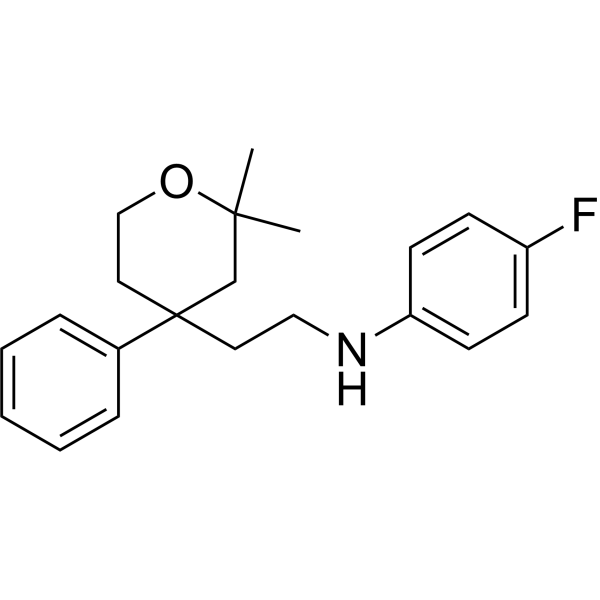
- HY-155427
-
|
|
ICMT
|
Cancer
|
|
ICMT-IN-20 (compound 54) is an inhibitor of ICMT (IC50=0.682 μM) .
|
-
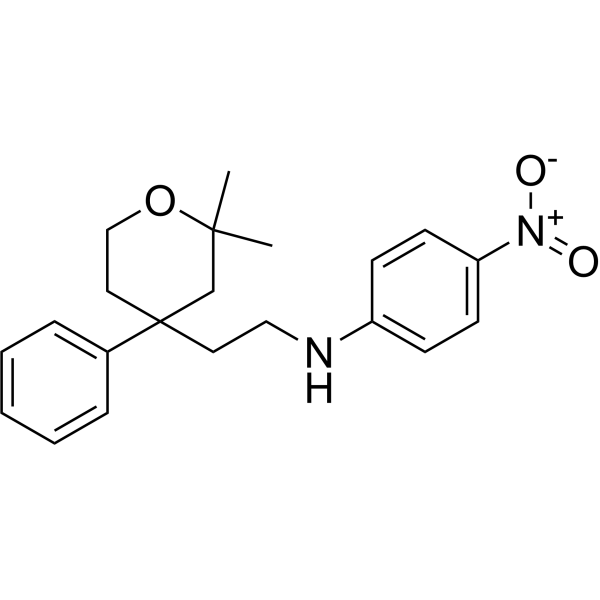
- HY-149707
-
|
|
ICMT
|
Cancer
|
|
ICMT-IN-21 (compound 6ag) is an ICMT inhibitor (IC50=8.8 μM), a sulfonamide-modified farnesyl cysteine (SMFC). The farnesyl and carboxylic acid motifs of ICMT-IN-21 are important structures for inhibiting ICMT .
|
-

- HY-155428
-
|
|
ICMT
|
Cancer
|
|
ICMT-IN-22 (compound 62) is an inhibitor of ICMT (IC50=0.63 μM) .
|
-
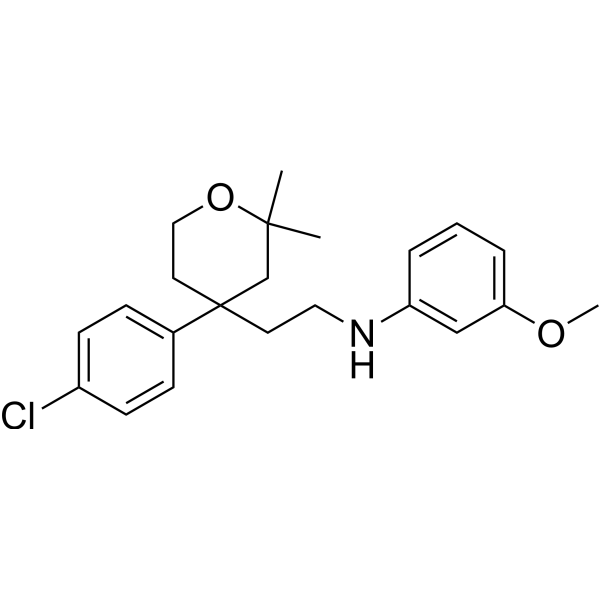
- HY-157100
-
|
|
ICMT
|
Cancer
|
|
ICMT-IN-23 (compound 36) is an inhibitor of ICMT (IC50=0.123 μM) .
|
-
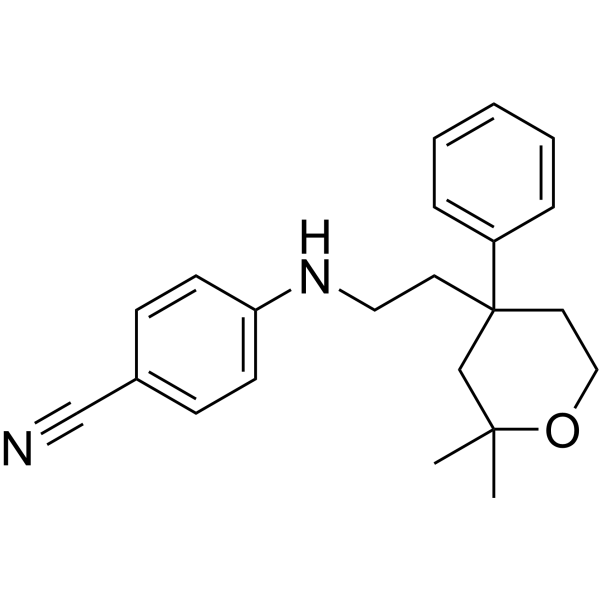
- HY-155429
-
|
|
ICMT
|
Cancer
|
|
ICMT-IN-24 (compound 63) is an inhibitor of ICMT (IC50=0.19 μM) .
|
-
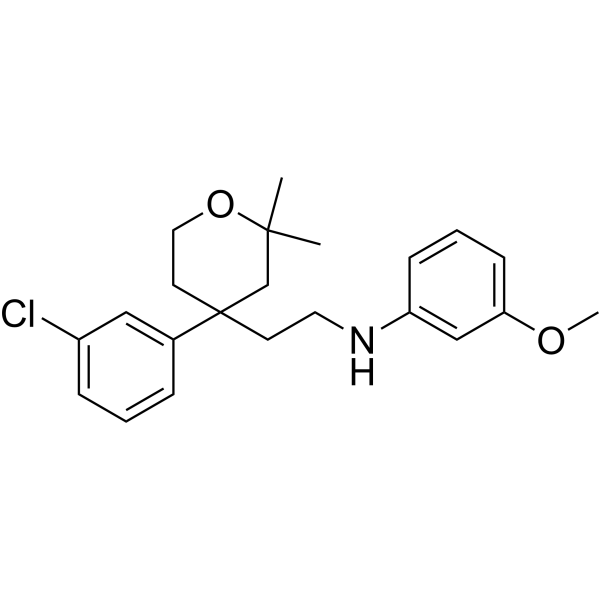
- HY-157101
-
|
|
ICMT
|
Cancer
|
|
ICMT-IN-25 (compound 37) is an inhibitor of ICMT (IC50=0.025 μM) .
|
-
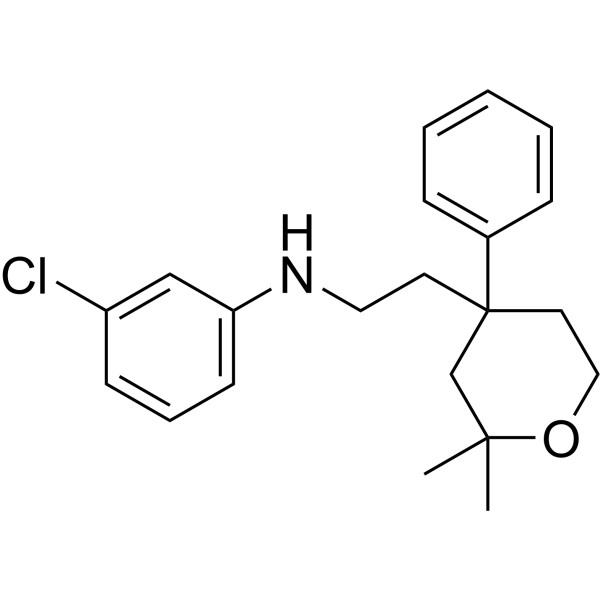
- HY-157102
-
|
|
ICMT
|
Cancer
|
|
ICMT-IN-26 (compound 38) is an inhibitor of ICMT (IC50=0.36 μM) .
|
-
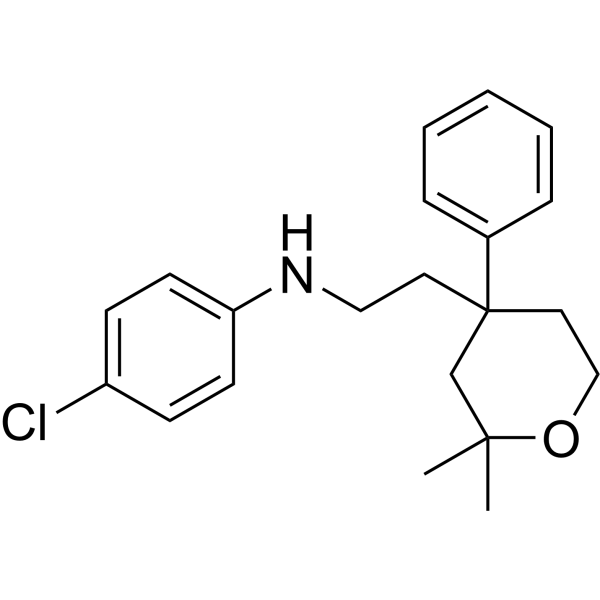
- HY-155430
-
|
|
ICMT
|
Cancer
|
|
ICMT-IN-27 (compound 64) is an inhibitor of ICMT (IC50=0.1 μM) .
|
-
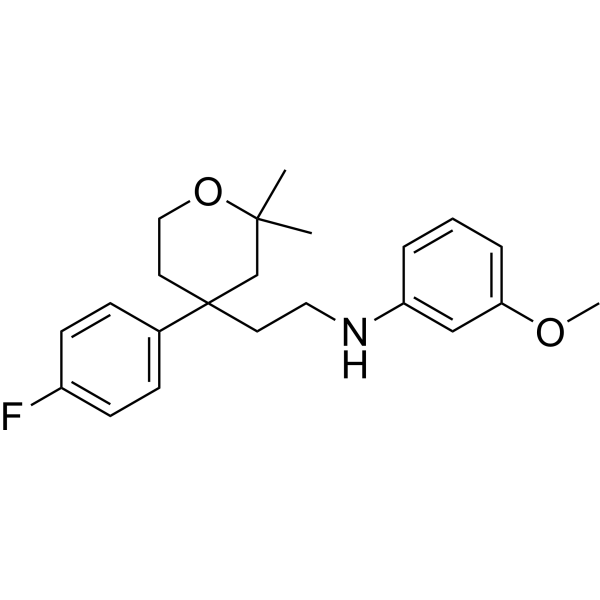
- HY-155431
-
|
|
ICMT
|
Cancer
|
|
ICMT-IN-28 (compound 65) is an inhibitor of ICMT (IC50=0.008 μM) .
|
-

- HY-155432
-
|
|
ICMT
|
Cancer
|
|
ICMT-IN-29 (compound 66) is an inhibitor of ICMT (IC50=0.019 μM) .
|
-
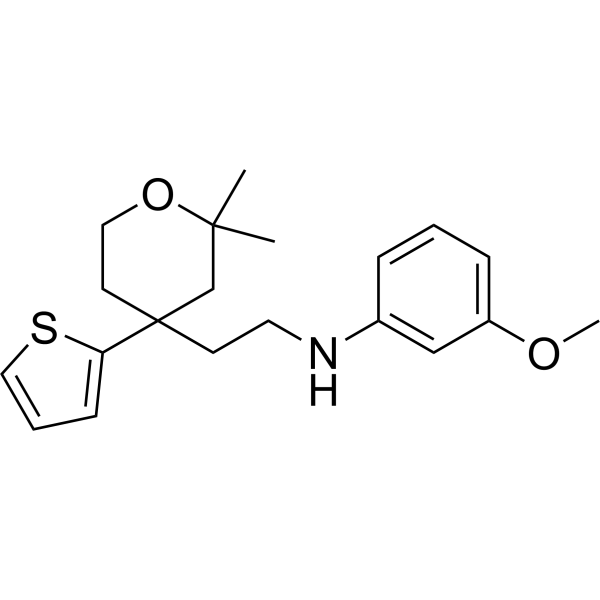
- HY-157092
-
|
|
ICMT
|
Cancer
|
|
ICMT-IN-3 (compound 27) is an inhibitor of ICMT (IC50=0.015 μM) .
|
-
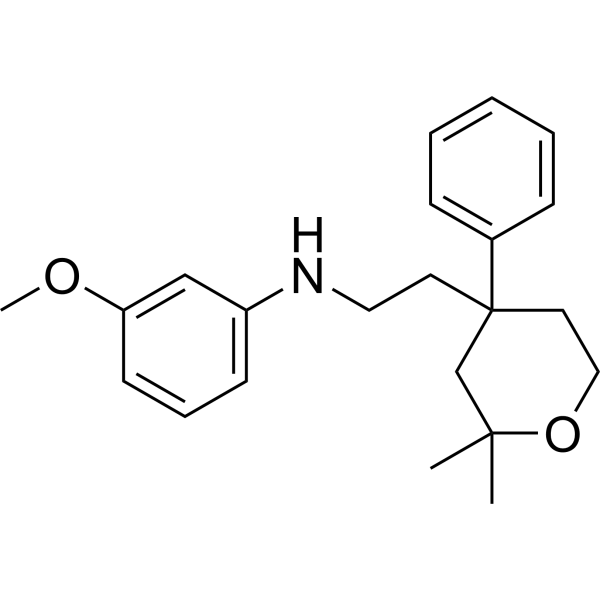
- HY-155433
-
|
|
ICMT
|
Cancer
|
|
ICMT-IN-30 (compound 67) is an inhibitor of ICMT (IC50=0.27 μM) .
|
-
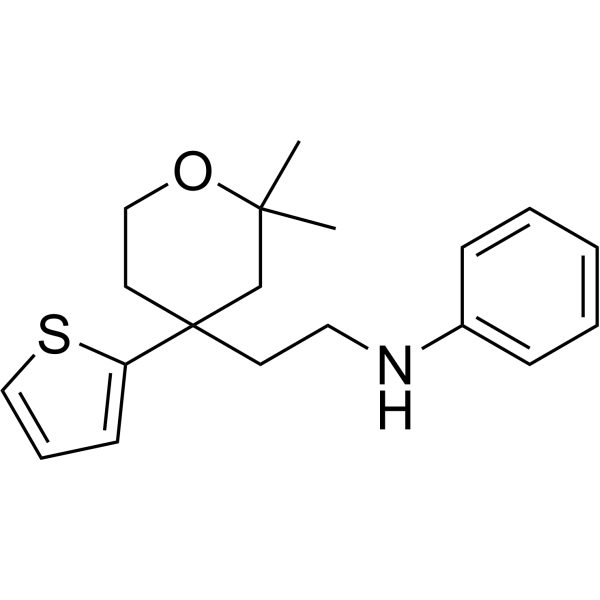
- HY-155434
-
|
|
ICMT
|
Cancer
|
|
ICMT-IN-31 (compound 68) is an inhibitor of ICMT (IC50=0.0038 μM) .
|
-
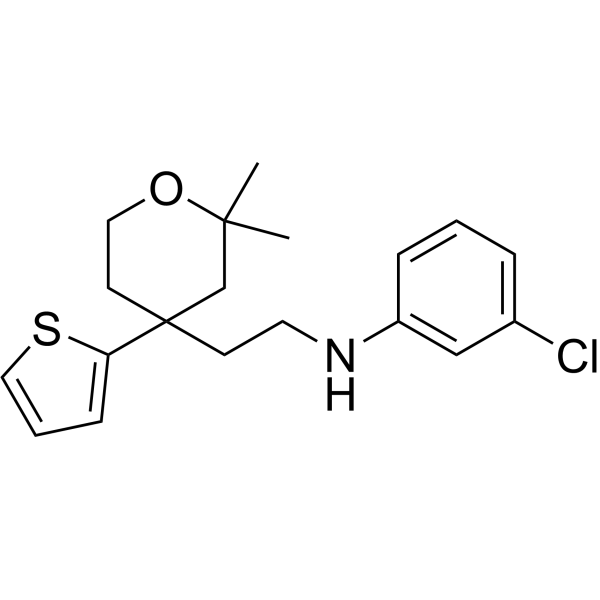
- HY-155435
-
|
|
ICMT
|
Cancer
|
|
ICMT-IN-32 (compound 70) is an inhibitor of ICMT (IC50=0.777 μM) .
|
-
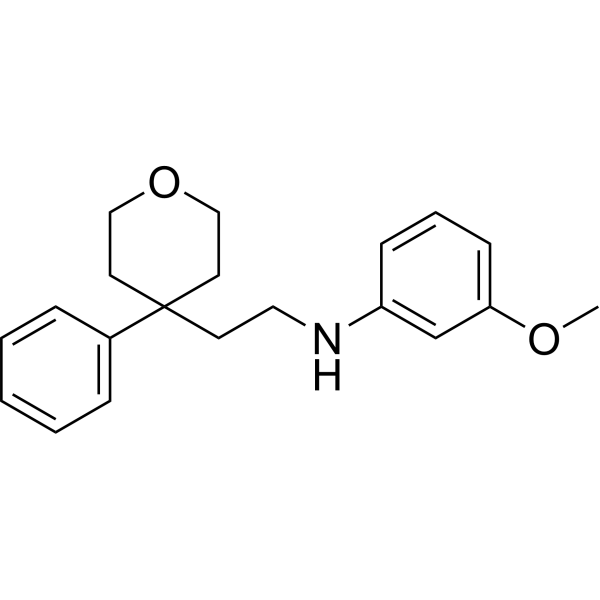
- HY-155436
-
|
|
ICMT
|
Cancer
|
|
ICMT-IN-33 (compound 73) is an inhibitor of ICMT (IC50=0.46 μM) .
|
-

- HY-157103
-
|
|
ICMT
|
Cancer
|
|
ICMT-IN-34 (compound 39) is an inhibitor of ICMT (IC50=0.17 μM) .
|
-
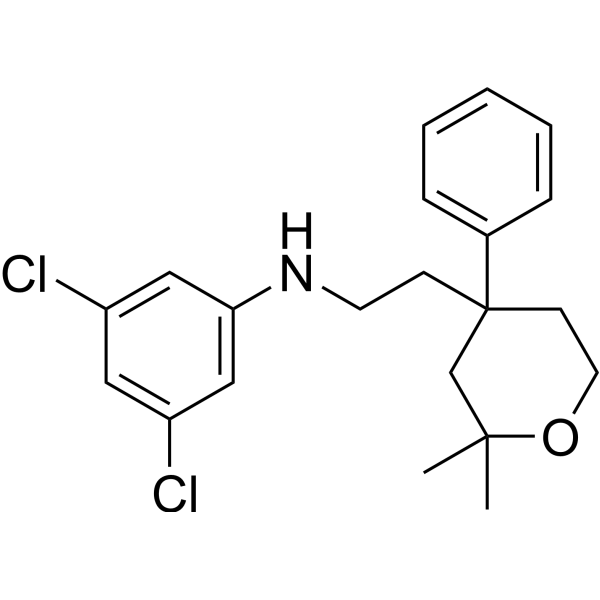
- HY-149709
-
|
|
ICMT
|
Cancer
|
|
ICMT-IN-35 (compound 10n) is a FTPA-triazole compound and ICMT inhibitor (IC50=0.8 μM). ICMT-IN-35 is taken up by mammalian cells and can prevent K-Ras membrane localization and induce K-Ras mislocalization. Furthermore, ICMT-IN-35 is selectively cytotoxic against ICMT +/+ MEF cells and has low micromolar activity (IC50=0.8 μM) against metastatic pancreatic cancer cell lines .
|
-
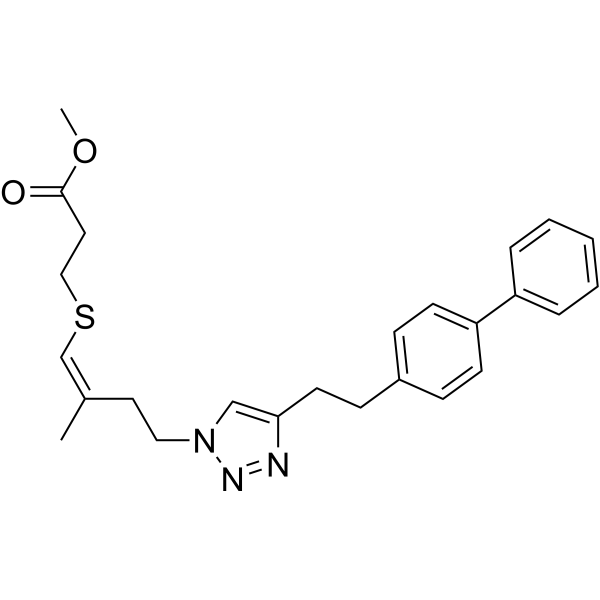
- HY-157104
-
|
|
ICMT
|
Cancer
|
|
ICMT-IN-36 (compound 40) is an inhibitor of ICMT (IC50=0.181 μM) .
|
-
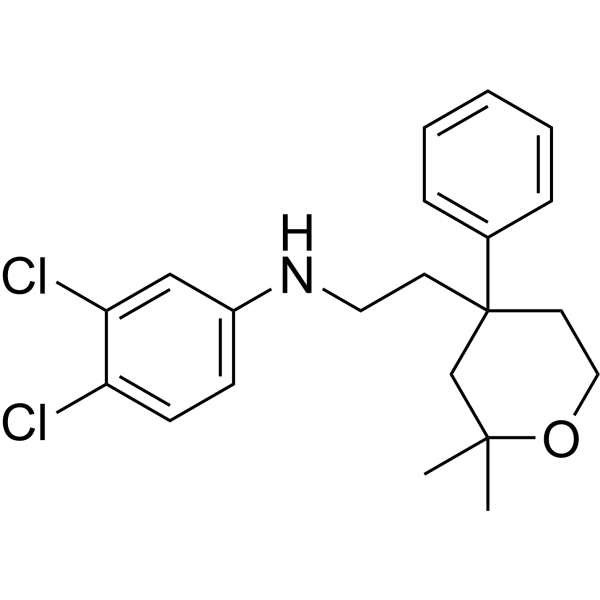
- HY-157105
-
|
|
ICMT
|
Cancer
|
|
ICMT-IN-37 (compound 41) is an inhibitor of ICMT (IC50=0.308 μM) .
|
-
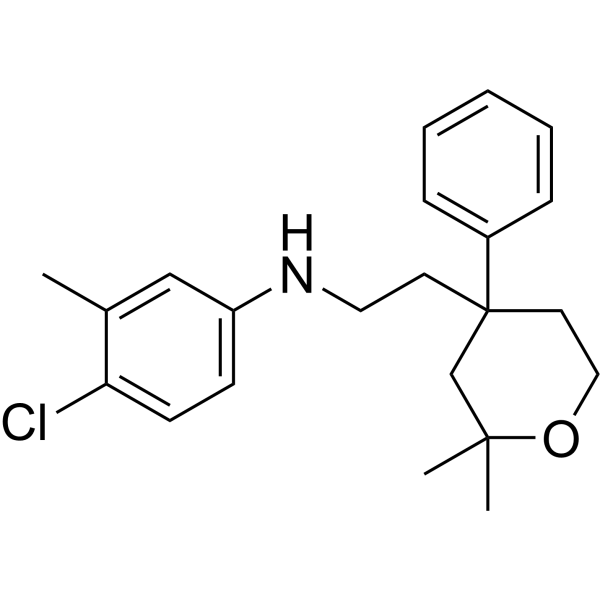
- HY-157106
-
|
|
ICMT
|
Cancer
|
|
ICMT-IN-38 (compound 42) is an inhibitor of ICMT (IC50=0.049 μM) .
|
-
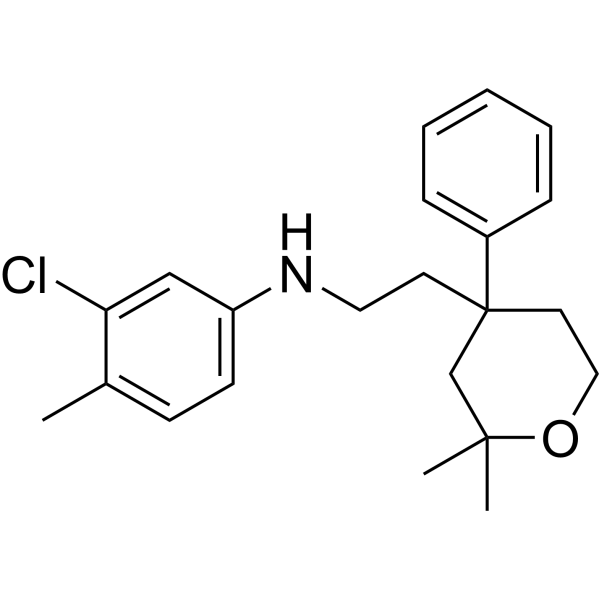
- HY-157107
-
|
|
ICMT
|
Cancer
|
|
ICMT-IN-39 (compound 18) is an inhibitor of ICMT (IC50=0.031 μM) .
|
-
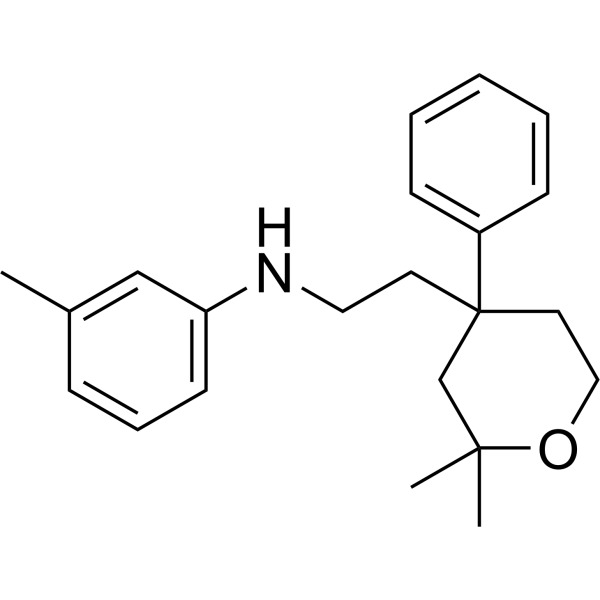
- HY-157094
-
|
|
ICMT
|
Cancer
|
|
ICMT-IN-4 (compound 28) is an inhibitor of ICMT (IC50=0.27 μM) .
|
-
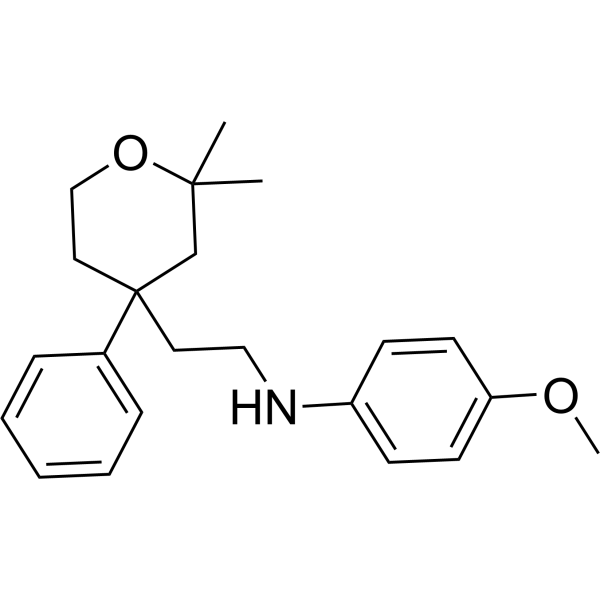
- HY-157108
-
|
|
ICMT
|
Cancer
|
|
ICMT-IN-40 (compound 19) is an inhibitor of ICMT (IC50=0.031 μM) .
|
-

- HY-157109
-
|
|
ICMT
|
Cancer
|
|
ICMT-IN-41 (compound 20) is an inhibitor of ICMT (IC50=0.069 μM) .
|
-
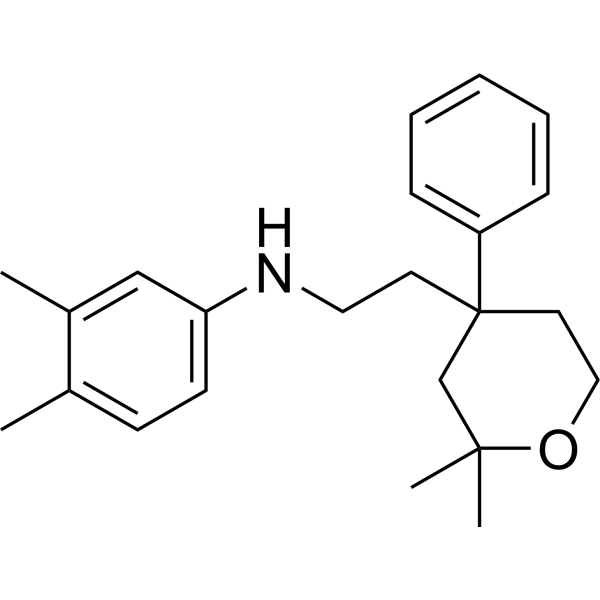
- HY-157110
-
|
|
ICMT
|
Cancer
|
|
ICMT-IN-42 (compound 21) is an inhibitor of ICMT (IC50=0.054 μM) .
|
-

- HY-157111
-
|
|
ICMT
|
Cancer
|
|
ICMT-IN-43 (compound 22) is an inhibitor of ICMT (IC50=0.04 μM) .
|
-
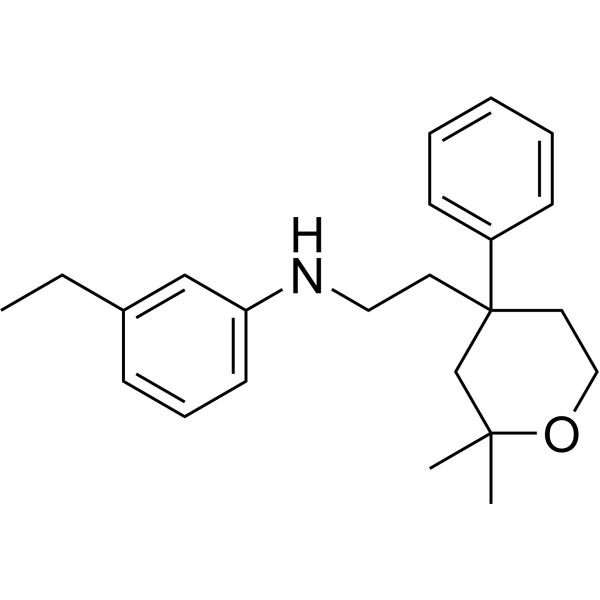
- HY-157112
-
|
|
ICMT
|
Cancer
|
|
ICMT-IN-44 (compound 23) is an inhibitor of ICMT (IC50=0.167 μM) .
|
-

- HY-157113
-
|
|
ICMT
|
Cancer
|
|
ICMT-IN-45 (compound 24) is an inhibitor of ICMT (IC50=0.132 μM) .
|
-

- HY-157114
-
|
|
ICMT
|
Cancer
|
|
ICMT-IN-46 (compound 25) is an inhibitor of ICMT (IC50=0.556 μM) .
|
-
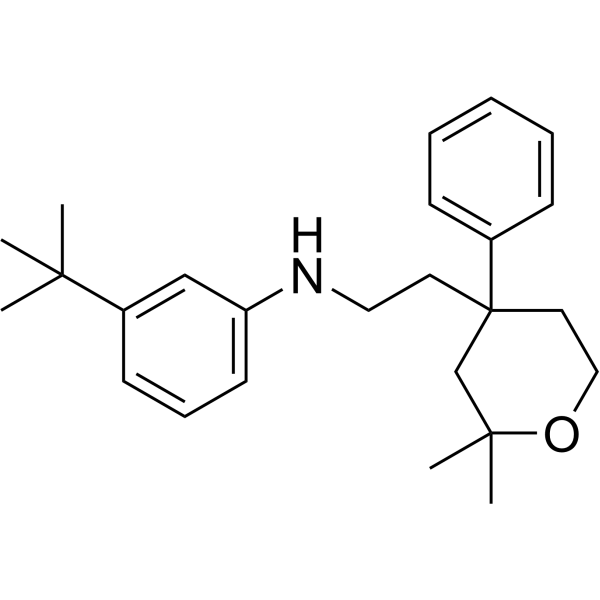
- HY-157115
-
|
|
ICMT
|
Cancer
|
|
ICMT-IN-47 (compound 26) is an inhibitor of ICMT (IC50=0.76 μM) .
|
-

- HY-157116
-
|
|
ICMT
|
Cancer
|
|
ICMT-IN-48 (compound 1) is an ICMT inhibitor that is competitive (Km=13 μM) for the prenylated methyl acceptor, the first substrate of ICMT. ICMT-IN-48 inhibits ICMT activity with IC50s affected by the concentration of the second substrate S-adenosylmethinine (SAM), and the IC50s are 3.5 μM (1×Km SAM) and 2.3 μM (10×Km SAM), respectively .
|
-
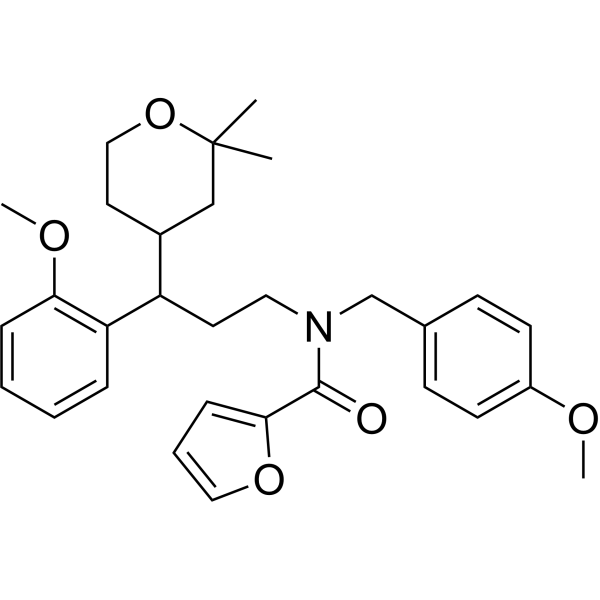
- HY-157117
-
|
|
ICMT
|
Cancer
|
|
ICMT-IN-49 (compound 2) is an inhibitor of ICMT (IC50=0.12 μM) .
|
-

- HY-155419
-
|
|
ICMT
|
Cancer
|
|
ICMT-IN-5 (compound 46) is an inhibitor of ICMT (IC50=0.3 μM) .
|
-
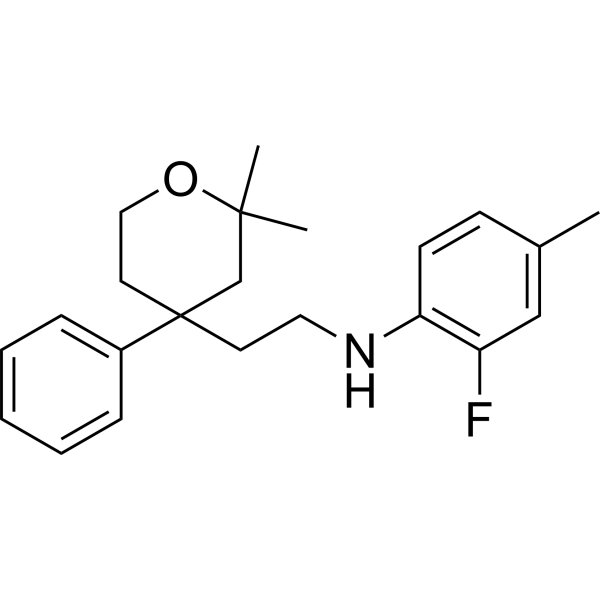
- HY-157118
-
|
|
ICMT
|
Cancer
|
|
ICMT-IN-50 (compound 3) is an inhibitor of ICMT (IC50=0.31 μM) .
|
-
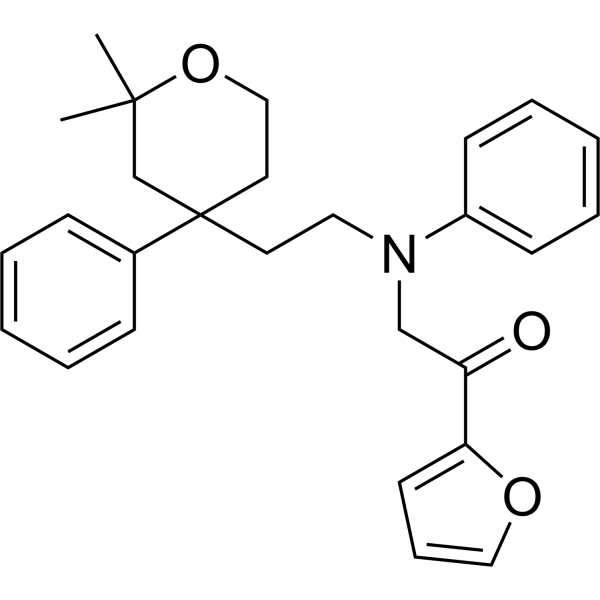
- HY-157119
-
|
|
ICMT
|
Cancer
|
|
ICMT-IN-51 (compound 43) is an inhibitor of ICMT (IC50=0.55 μM) .
|
-
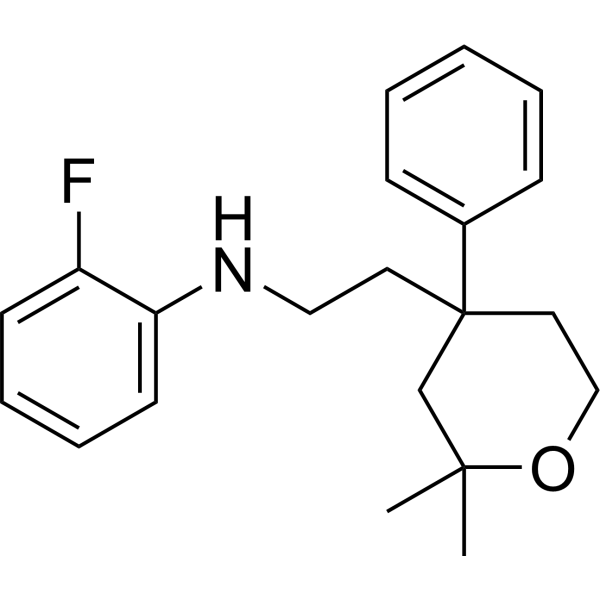
- HY-157120
-
|
|
ICMT
|
Cancer
|
|
ICMT-IN-52 (compound 44) is an inhibitor of ICMT (IC50=0.052 μM) .
|
-
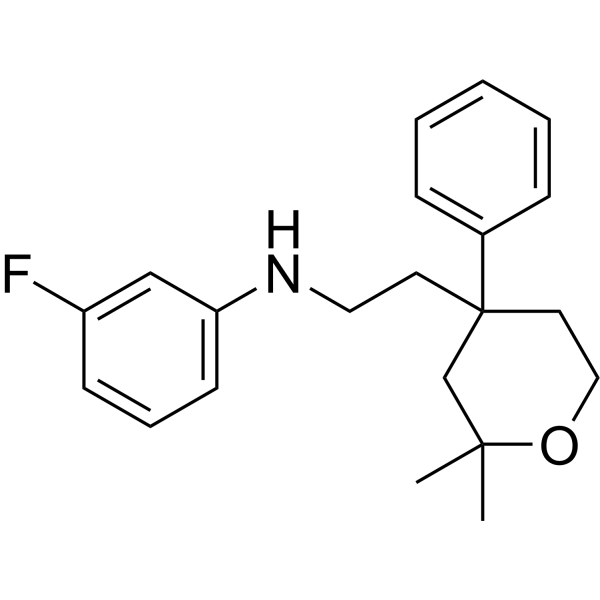
- HY-149729
-
|
|
ICMT
|
Cancer
|
|
ICMT-IN-53 (compound 12) is an ICMT inhibitor (IC50=0.96 μM) with PAMPA permeability and antiproliferative activity. ICMT-IN-53 inhibits the proliferation of MDA-MB-231 and PC3 with IC50s of 5.14 μM and 5.88 μM, respectively .
|
-
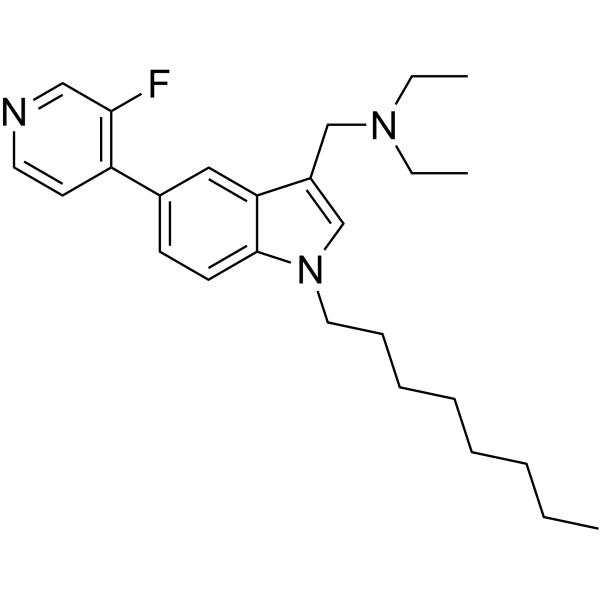
- HY-157095
-
|
|
ICMT
|
Cancer
|
|
ICMT-IN-6 (compound 29) is an inhibitor of ICMT (IC50=0.09 μM) .
|
-

- HY-149705
-
|
|
ICMT
|
Cancer
|
|
ICMT-IN-7 (compound 74) is an inhibitor of ICMT (IC50=0.015 μM). ICMT-IN-7 dose-dependently induces ICMT accumulation in the cytoplasm of HCT-116 cells and inhibits the proliferation of multiple cancer cell lines expressing K-Ras and N-Ras .
|
-
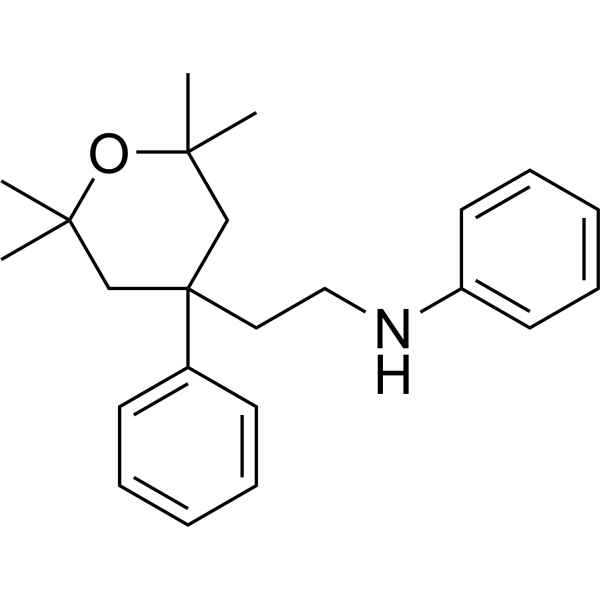
- HY-157096
-
|
|
ICMT
|
Cancer
|
|
ICMT-IN-8 (compound 30) is an inhibitor of ICMT (IC50=0.652 μM) .
|
-
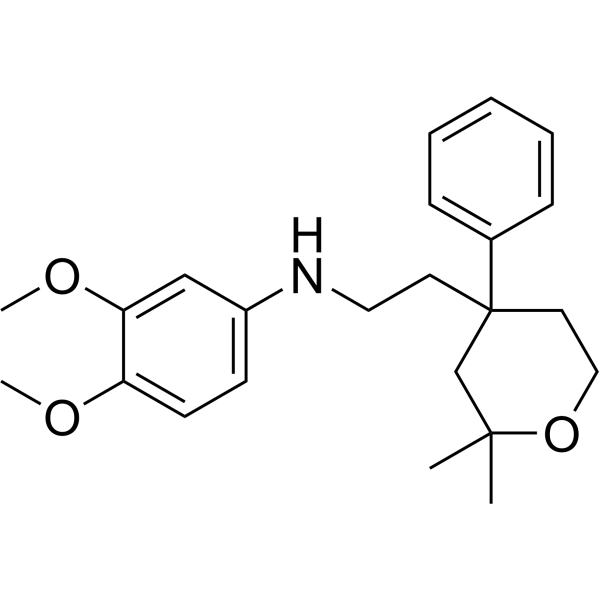
- HY-155420
-
|
|
ICMT
|
Cancer
|
|
ICMT-IN-9 (compound 47) is an inhibitor of ICMT (IC50=0.16 μM) .
|
-

- HY-149730
-
|
|
ICMT
|
Cancer
|
|
ICMT-IN-54 (compound 7c) is an adamantyl analogue and an ICMT inhibitor (IC50=12.4 μM), which can inhibit ICMT Methylation. ICMT-in-54 inhibits BFC (N-biotinyl-(6-aminohexanoic)-S-farnesyl-L-cysteine) methylation in saccharomyces cerevisiae expressing ICMT, which is an indirect effect of inhibiting ICMT methylation .
|
-
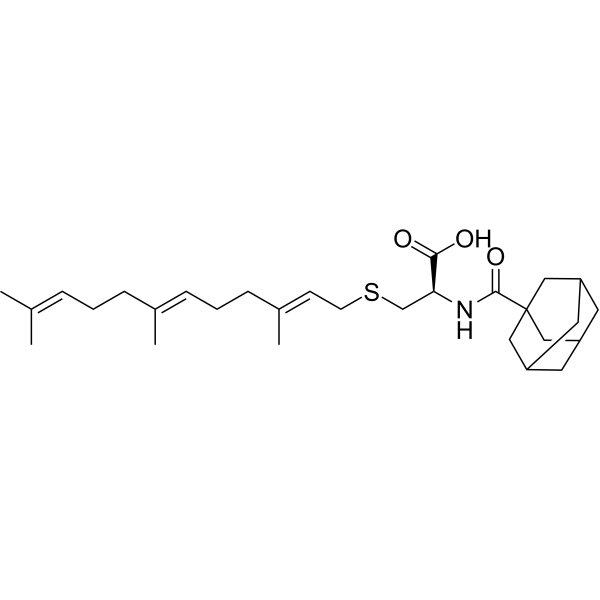
- HY-158061
-
|
|
Topoisomerase
Apoptosis
|
Cancer
|
|
Topoisomerase II inhibitor 20 (Compound 3e) is a potent topoisomerase II (Topoisomerase II) inhibitor with an IC50 of 0.98 µM. Topoisomerase II inhibitor 20 induces apoptosis and has broad-spectrum anticancer activity .
|
-
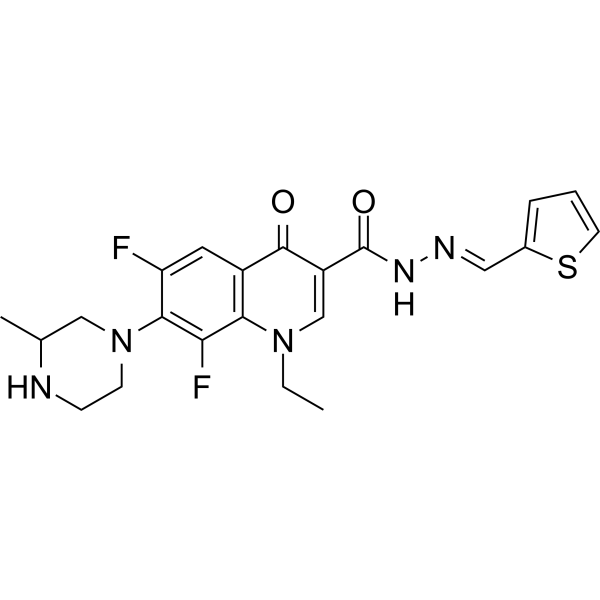
- HY-16350
-
|
NKP-1339; IT-139; KP-1339
|
DNA/RNA Synthesis
Apoptosis
|
Cancer
|
|
BOLD-100 (NKP-1339; IT-139) is the first-in-class ruthenium-based anticancer agent in development against solid cancer with limited side effects. BOLD-100 induces G2/M cell cycle arrest, blockage of DNA synthesis, and induction of apoptosis via the mitochondrial pathway. BOLD-100 has a high tumor targeting potential, strongly binds to serum proteins such as albumin and transferrin and activates in the reductive tumor milieu .
|
-

- HY-147039
-
|
NKP-1339 free base; IT-139 free base; KP-1339 free base
|
HSP
Autophagy
|
Cancer
|
|
BOLD-100 (NKP-1339; IT-139) free base is a ruthenium-based anticancer agent. BOLD-100 free base also is an inhibitor of stress-induced GRP78 upregulation, disrupting endoplasmic reticulum (ER) homeostasis and inducing ER stress and unfolded protein response (UPR). BOLD-100 free base interferes with the complex interplay between ER-stress response, lysosome dynamics, and autophagy execution .
|
-
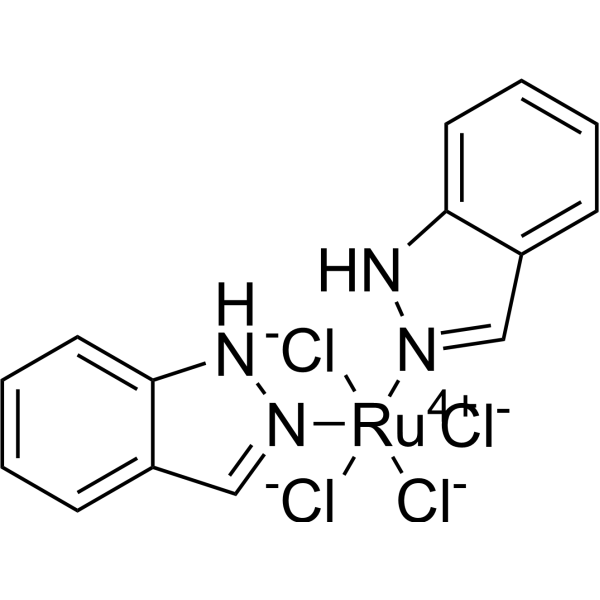
- HY-13594
-
|
Ce6
|
Bcl-2 Family
Caspase
PARP
Apoptosis
Fluorescent Dye
|
Infection
Cancer
|
|
Chlorin e6 is a photosensitizer and has strong absorption peaks at wavelength of 402 and 662 nm, as well as exhibiting intense fluorescence at 668 nm. Chlorin e6 has antimicrobial efficacy and anticancer activity. Chlorin e6 induces cell apoptosis via caspase-3 activation and can be used for the research of cancer .
|
-

| Cat. No. |
Product Name |
Type |
-
- HY-15150G
-
|
R428 (GMP); BGB324 (GMP)
|
Fluorescent Dye
|
|
Bemcentinib (R428) GMP is an orally active and selective inhibitor of Axl with an IC50 of 14 nM .
|
| Cat. No. |
Product Name |
Type |
| Cat. No. |
Product Name |
Target |
Research Area |
-
- HY-N2466
-
|
MT-I; [Nle4,D-Phe7]-α-MSH
|
Melanocortin Receptor
|
Neurological Disease
Cancer
|
|
Melanotan I is a potent non-selective melanocortin receptor (MCR) agonist. Melanotan I is a synthetic analogue of α-melanocyte stimulating hormone (α-MSH) that stimulates melanogenesis. Melanotan I can induce skin tanning by mimicking the actions of a-MSH on the melanocortin type 1 receptors (MC1R) of melanocytes. Melanotan I can be used for the research of sun-induced skin cancer, melanoma, inflammation and male erectile dysfunction .
|
-
- HY-P3742
-
|
|
Peptides
|
Cancer
|
|
Tyrosinase (192-200), human mouse is a nonapeptide. Tyrosinase (192-200), human mouse can be recognized by cytolytic T cell (CTL) on the HLA-B44 molecule. Tyrosinase (192-200), human mouse can be used in research of melanoma associated cancers .
|
| Cat. No. |
Product Name |
Target |
Research Area |
-
- HY-P99202
-
|
|
Inhibitory Antibodies
|
Cancer
|
|
Vibostolimab is an anti-TIGIT (T cell immunoglobulin and ITIM domain) monoclonal antibody. Vibostolimab shows antitumor activity, and can be used in non-small cell lung cancer (NSCLC) and melanoma research .
|
-
- HY-P99205
-
|
|
ADC Antibody
|
Cancer
|
|
Glembatumumab is a fully human IgG2 monoclonal antibody directed against the extracellular structural domain of GPNMB expressed in human breast cancer and melanoma. Glembatumumab can be coupled to the microtubule inhibitor monomethyl auristatin E to form glembatumumab vedotin. Glembatumumab vedotin is an antibody-agent coupling (ADC) with antitumor activity .
|
-
- HY-P9978
-
|
|
PD-1/PD-L1
|
Cancer
|
|
Toripalimab is the first domestic anti-tumor PD-1 antibody in China. Toripalimab is a selective, recombinant, humanized monoclonal antibody against PD-1. Toripalimab is able to bind to PD-1 and block the interaction with its ligands. Toripalimab has exhibited primary anti-tumor effects in tumors such as melanoma, lung cancer, digestive tract tumors, hepatobiliary and pancreatic tumors, neuroendocrine neoplasms, nasopharyngeal carcinoma and urothelial carcinoma .
|
| Cat. No. |
Product Name |
Category |
Target |
Chemical Structure |
| Cat. No. |
Compare |
Product Name |
Species |
Source |
Compare Products
|
| Products |
|
| Cat. No. |
|
| Species |
|
| Source |
|
| Tag |
|
| Accession |
|
| Gene ID |
|
| Molecular Weight |
|
| Purity |
|
| Endotoxin Level |
|
| Biological Activity |
|
| Appearance |
|
| Formulation |
|
| Storage & Stability |
|
| Shipping |
|
| Free Sample |
Yes
No
|
| Size |
* This product has been "discontinued".
Optimized version of product available:
|
| Cat. No. |
Product Name |
Chemical Structure |
-
- HY-N0610AS
-
|
|
|
Cinnamic acid-d6 is the deuterium labeled Cinnamic acid. Cinnamic acid has potential use in cancer intervention, with IC50s of 1-4.5 mM in glioblastoma, melanoma, prostate and lung carcinoma cells.
|
-

-
- HY-N0610AS2
-
|
|
|
Cinnamic acid- 13C3 (3-Phenylacrylic acid- 13C3) is the 13C labeled Cinnamic acid (HY-N0610A). Cinnamic acid has potential use in cancer intervention, with IC50s of 1-4.5 mM in glioblastoma, melanoma, prostate and lung carcinoma cells .
|
-

| Cat. No. |
Product Name |
Application |
Reactivity |
-
- HY-P81360
-
|
MAGEA1; MAGE1, MAGE1A; melanoma-associated antigen 1; Antigen MZ2-E; cancer/testis antigen 1.1 (CT1.1); MAGE-1 antigen
|
IHC-P
|
Human |
Your information is safe with us. * Required Fields.
Inquiry Information
- Product Name:
- Cat. No.:
- Quantity:
- MCE Japan Authorized Agent:























































































































































